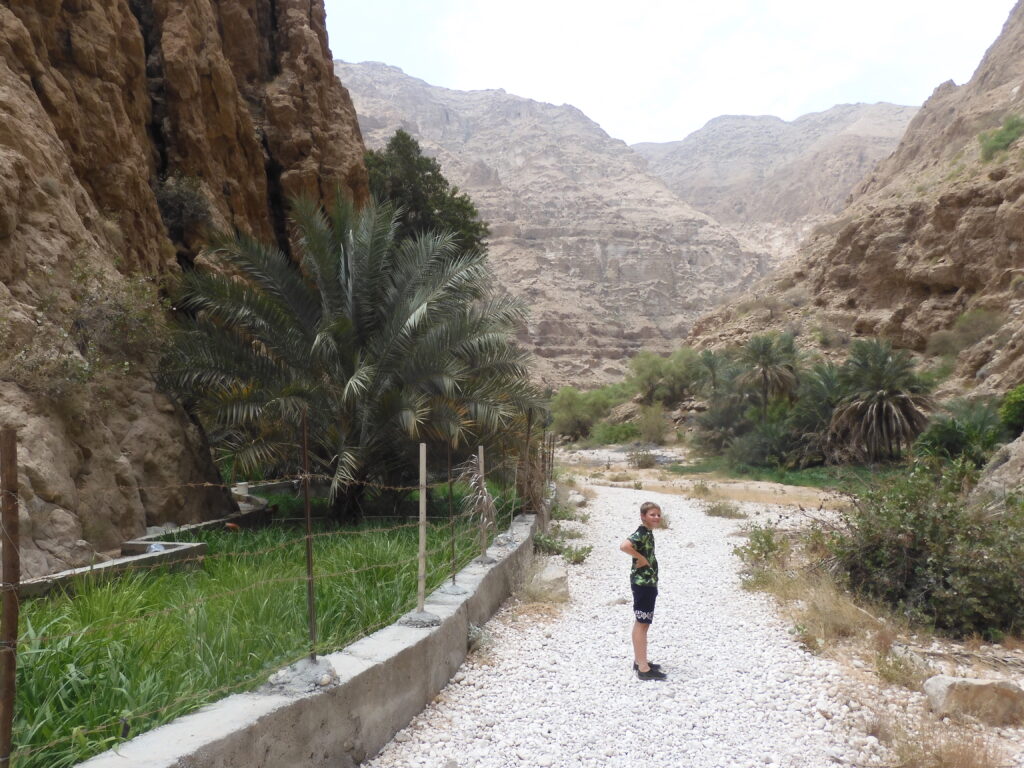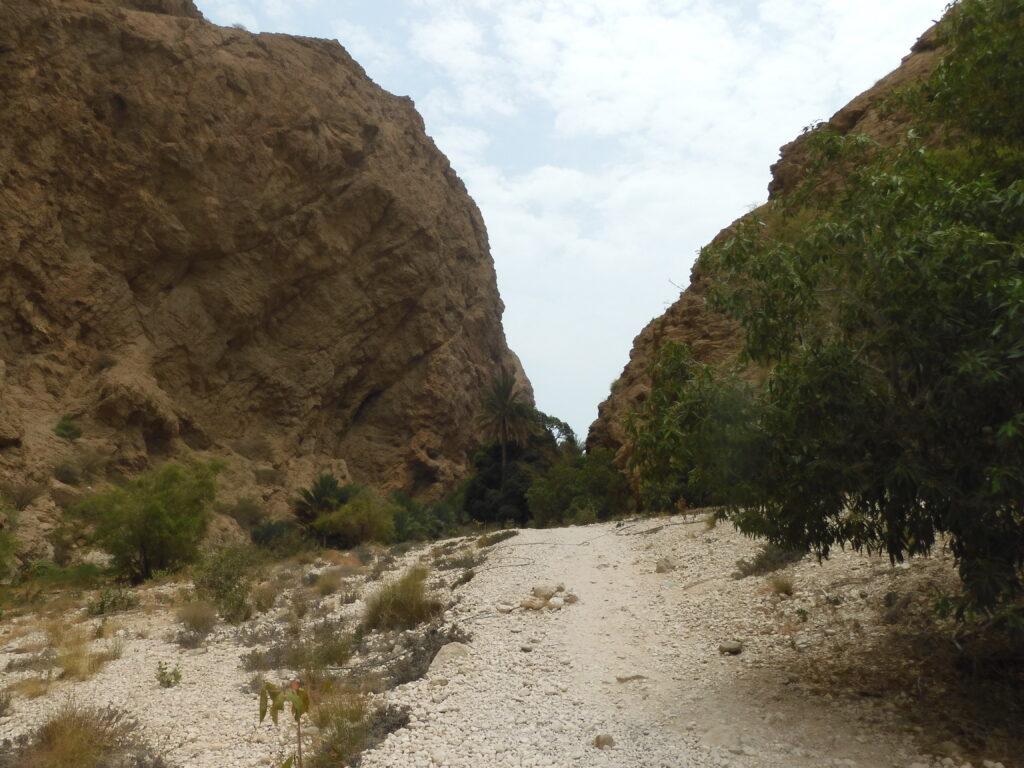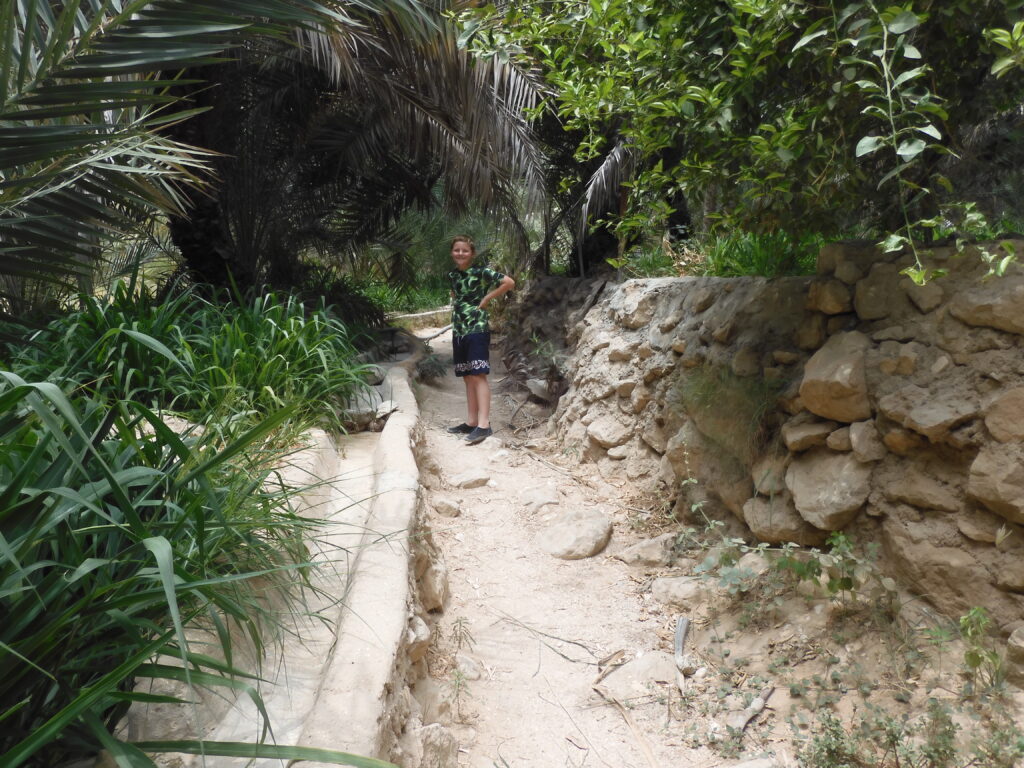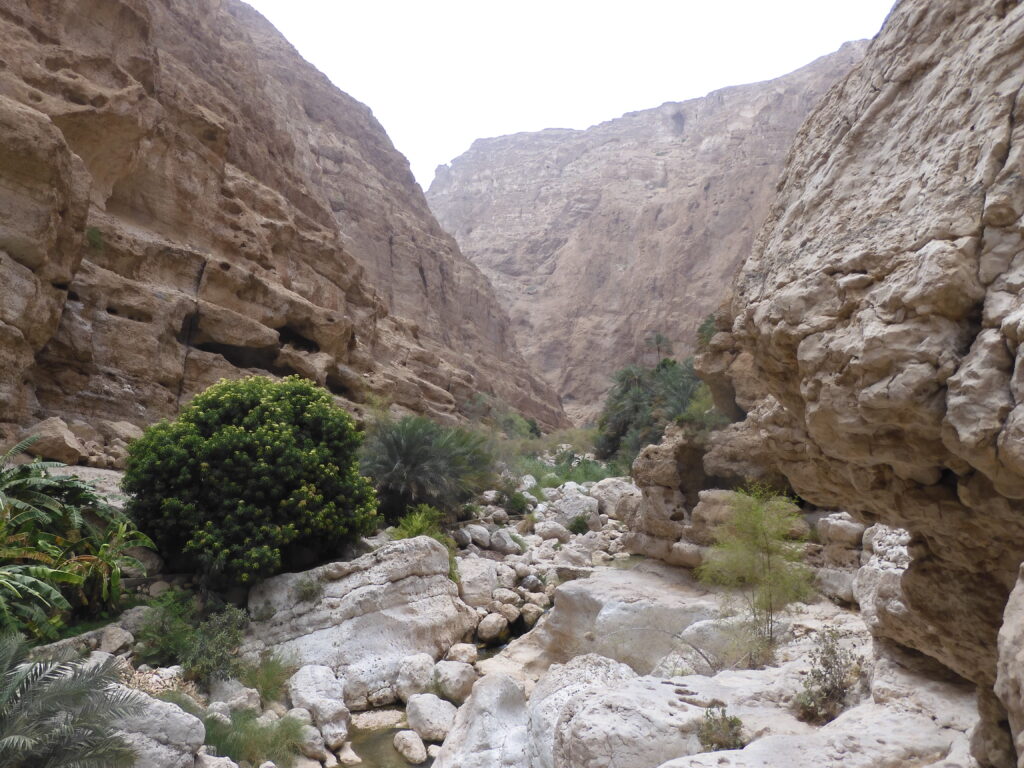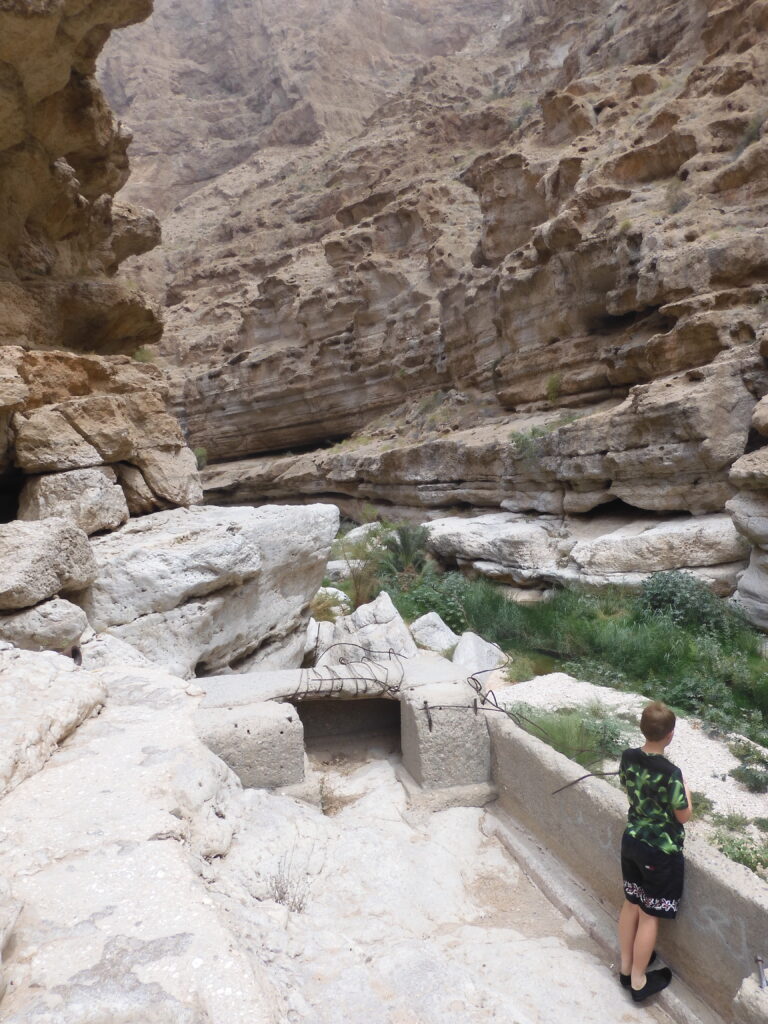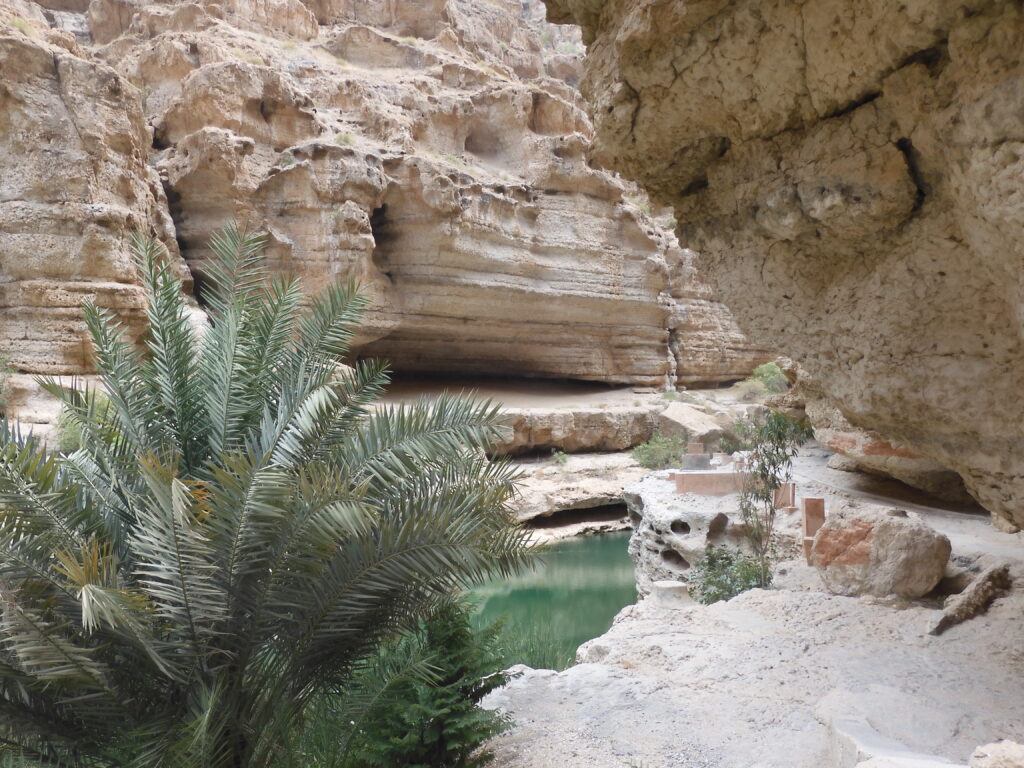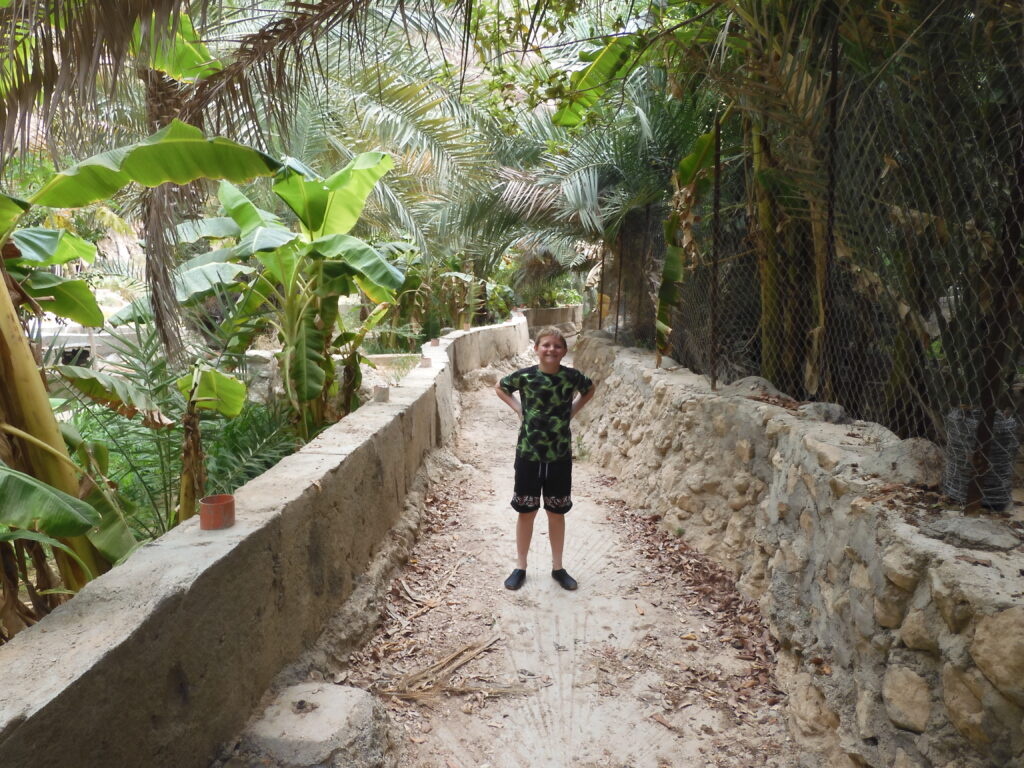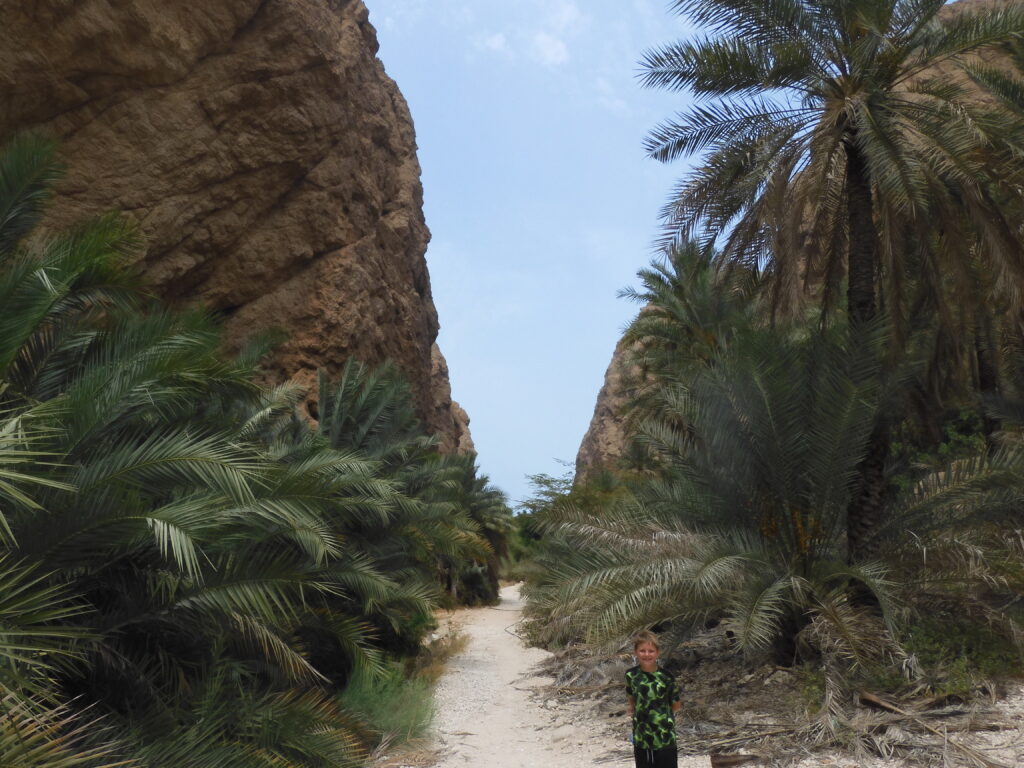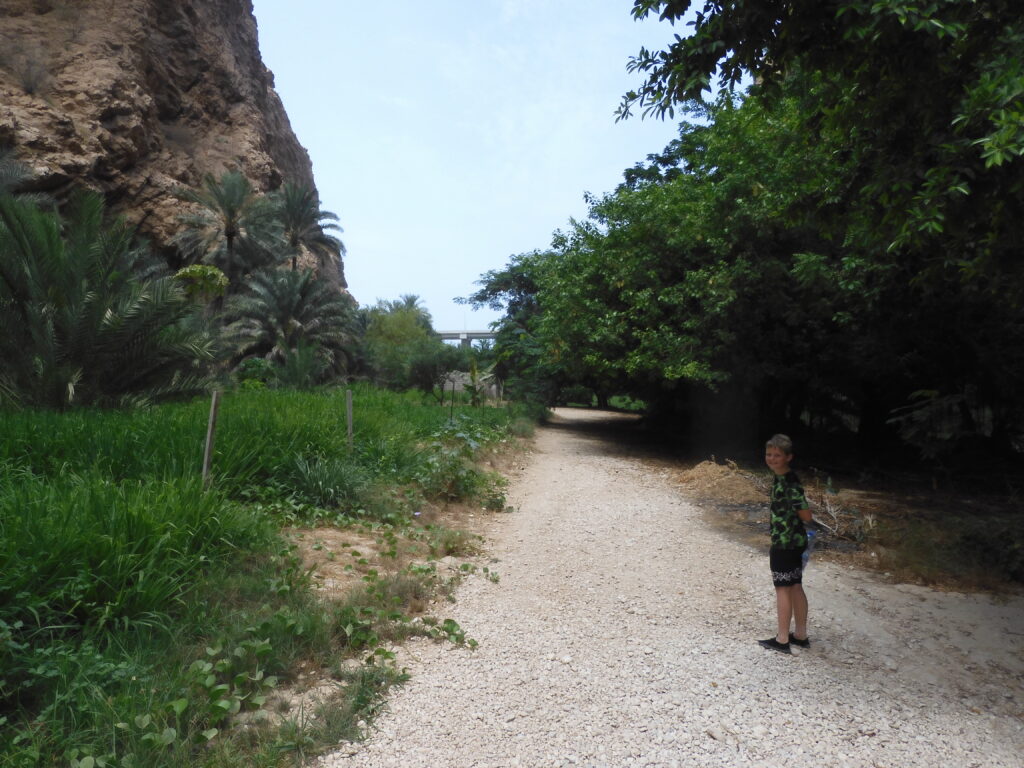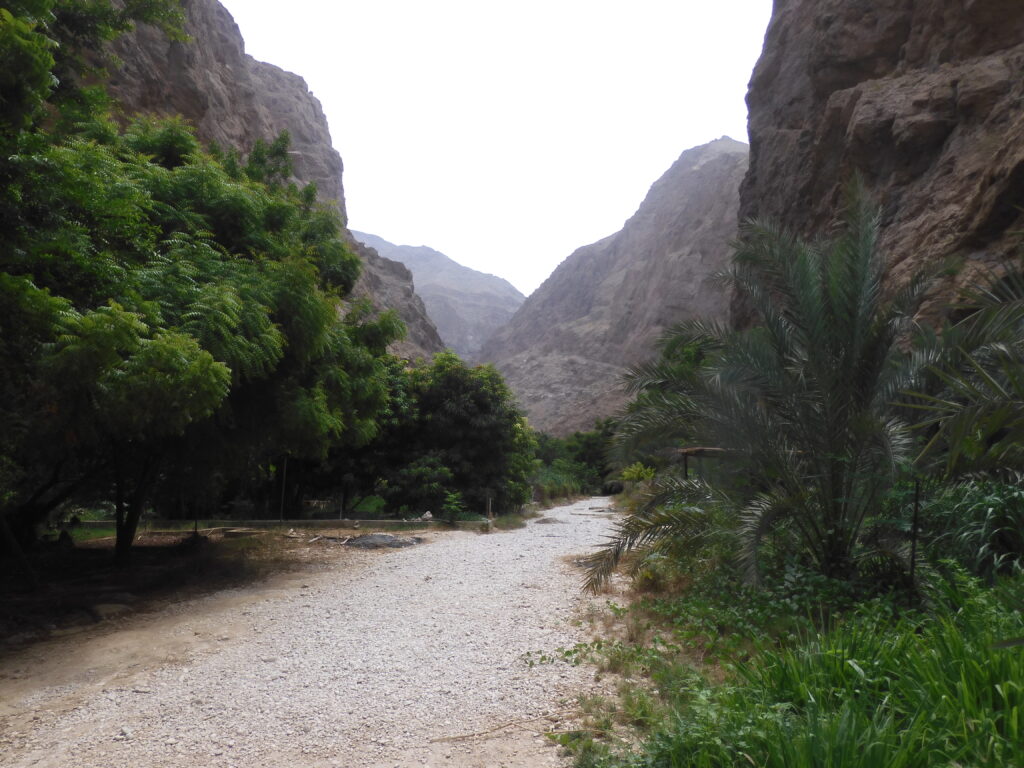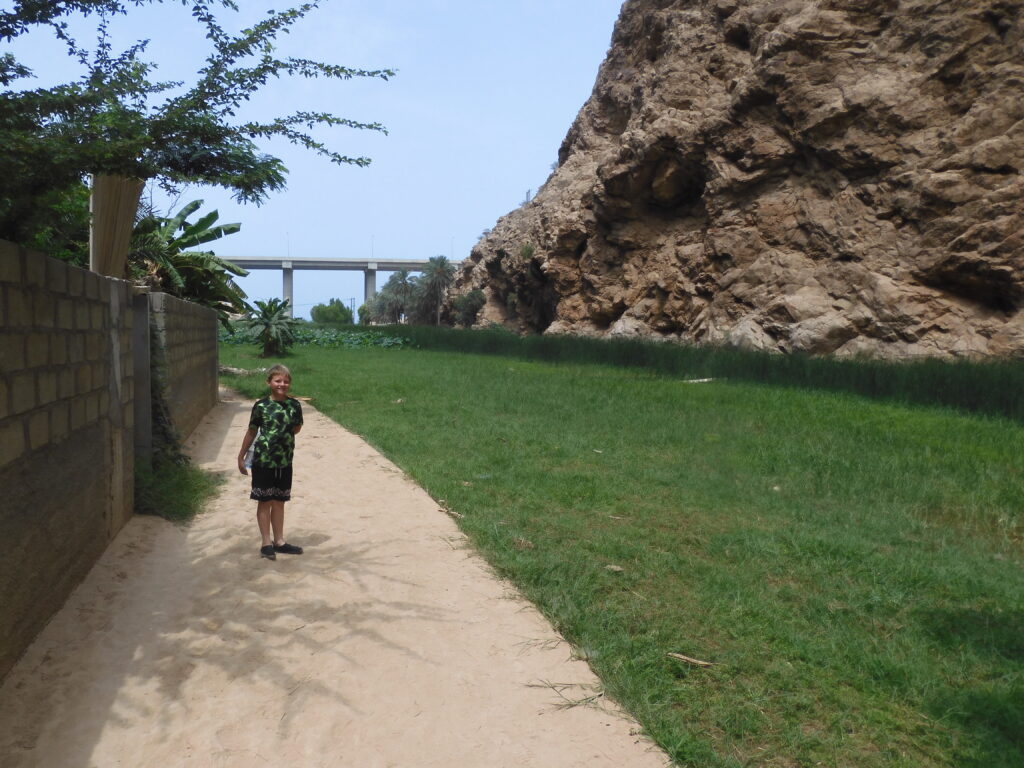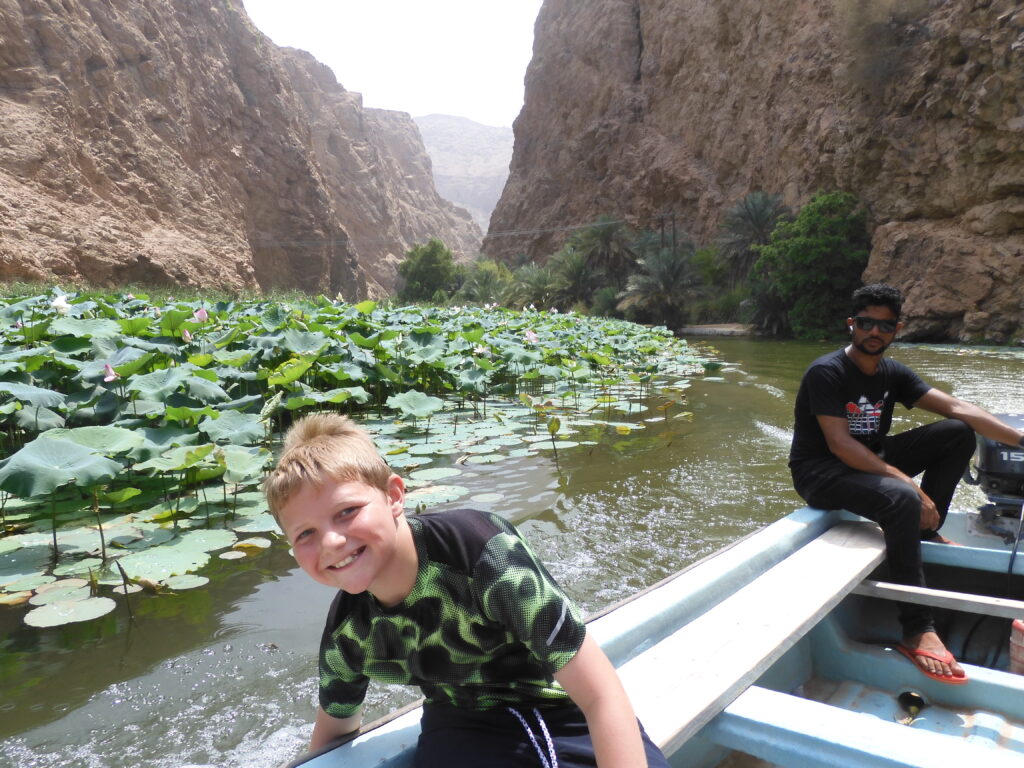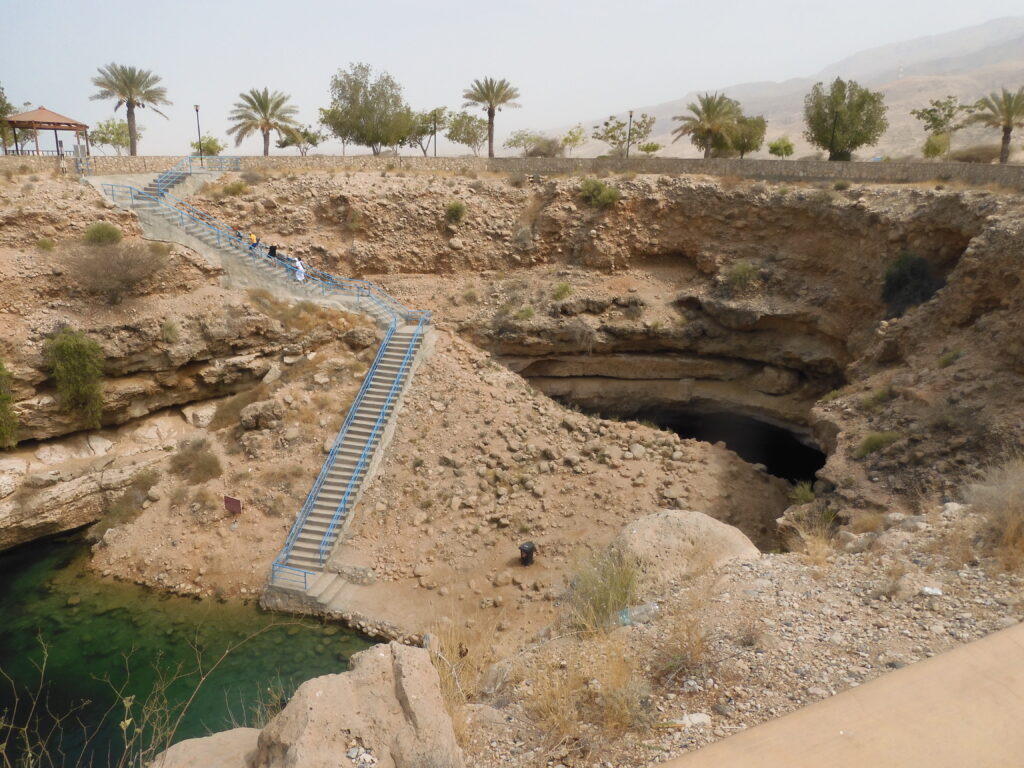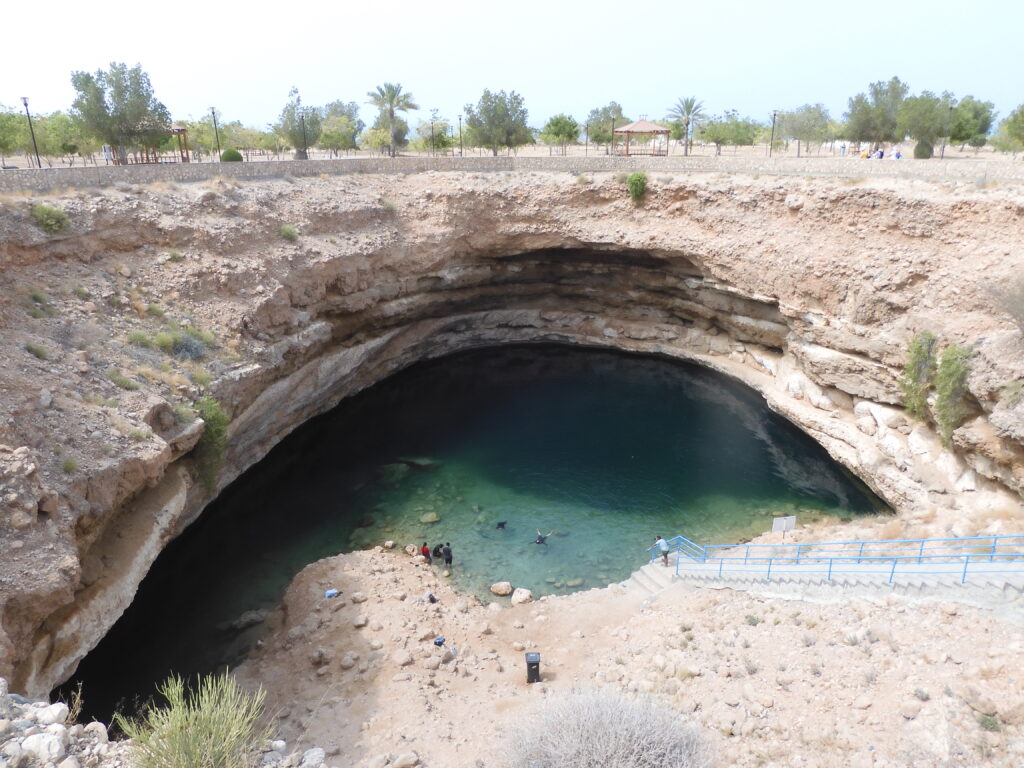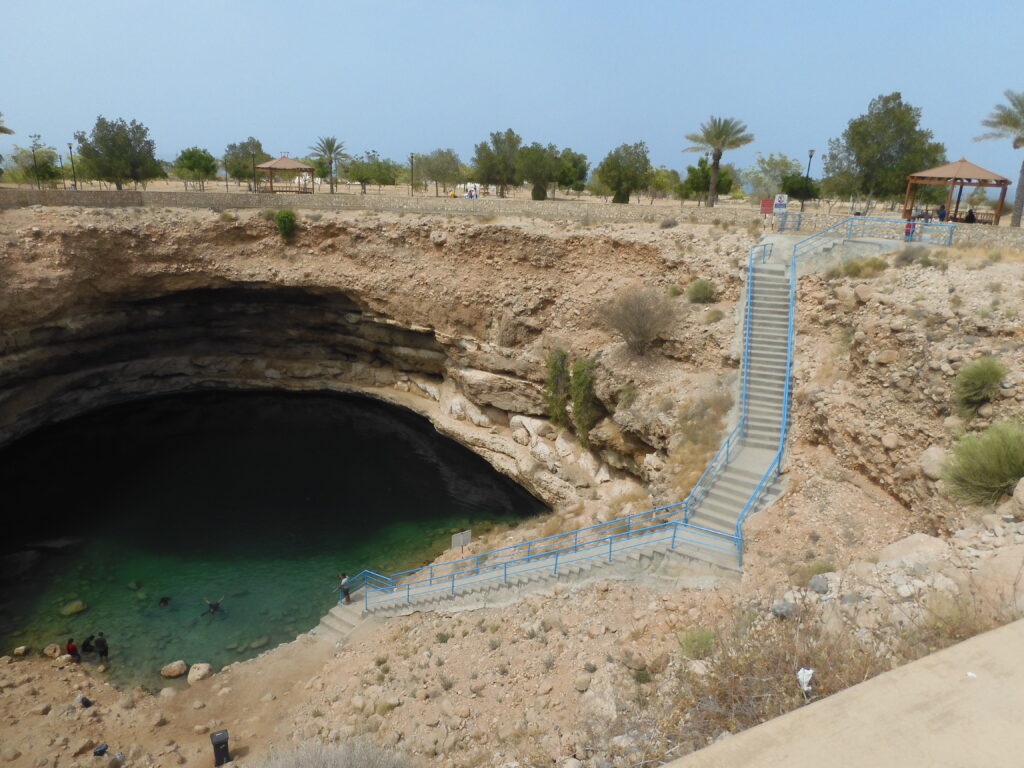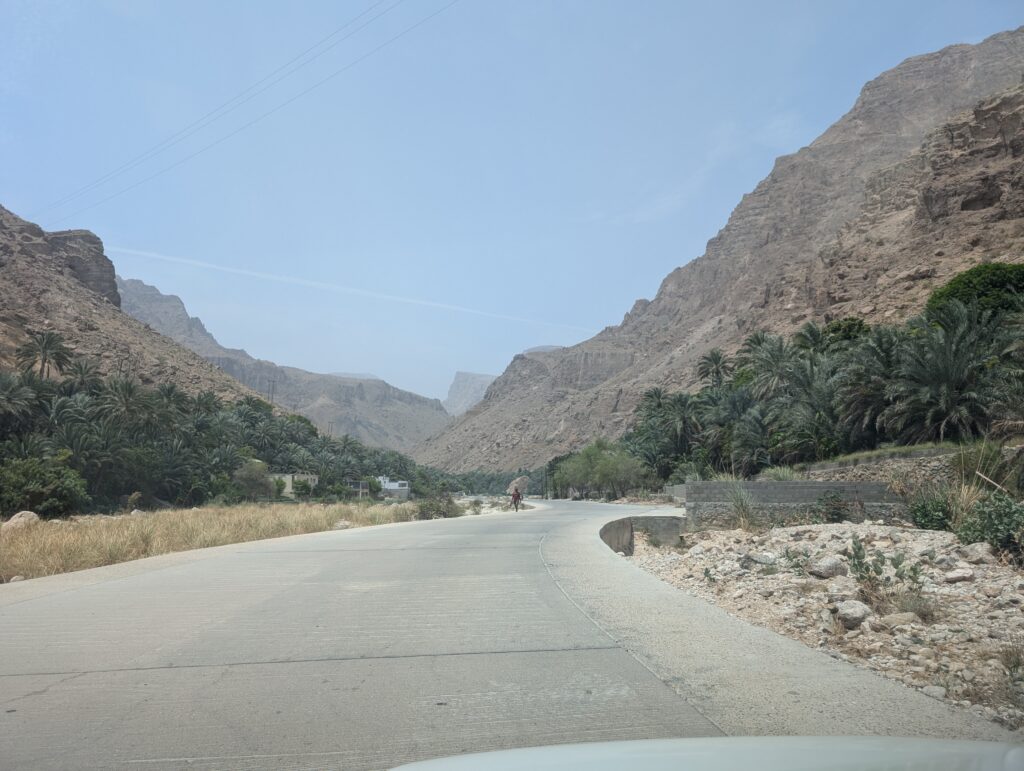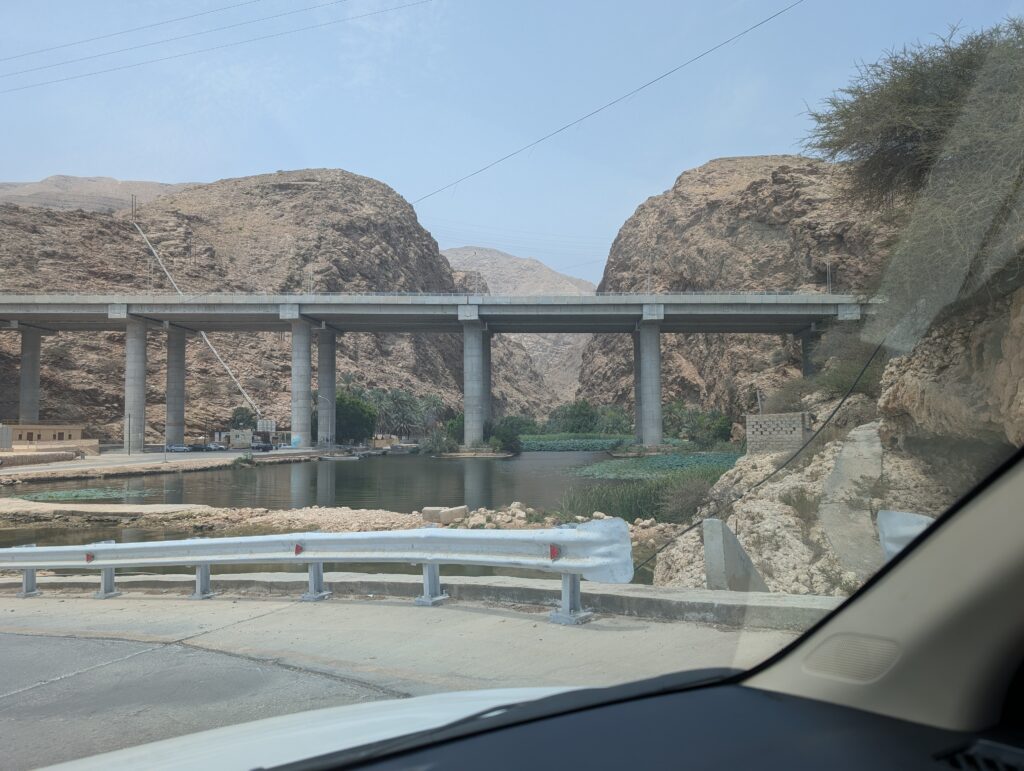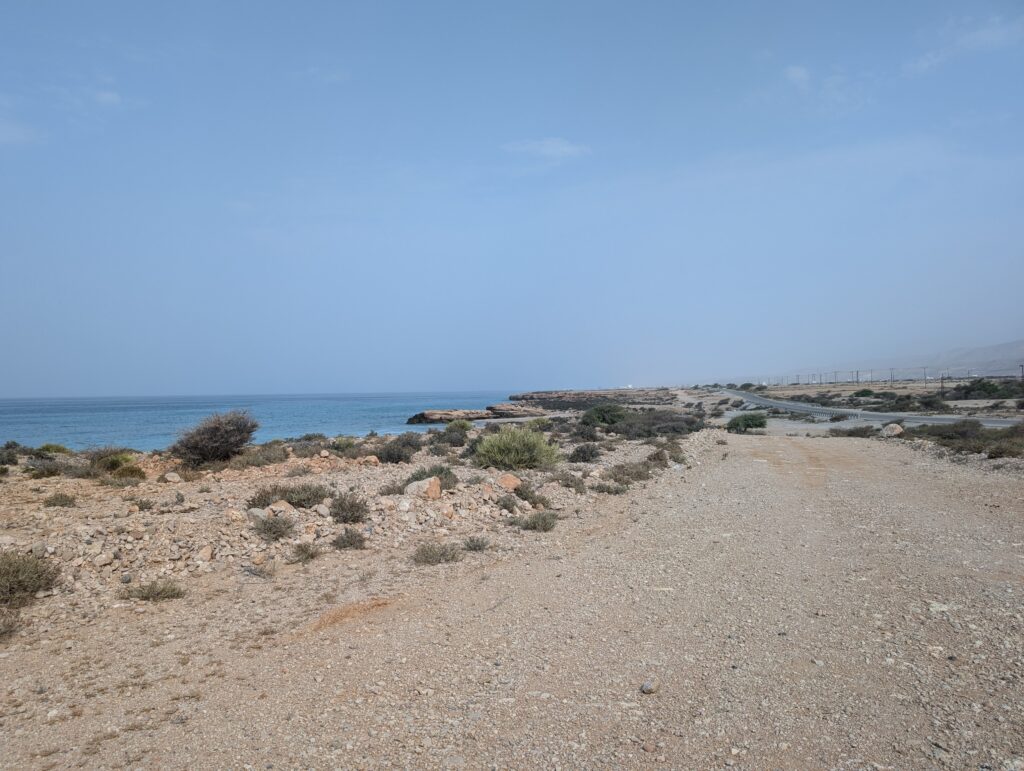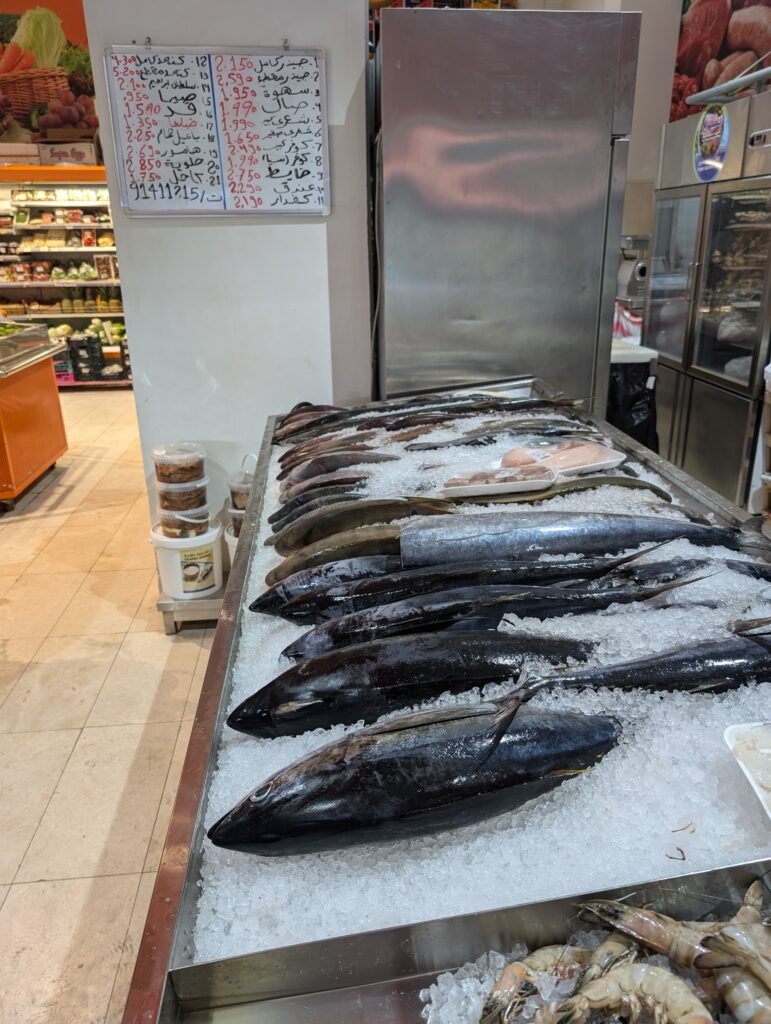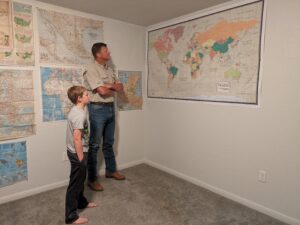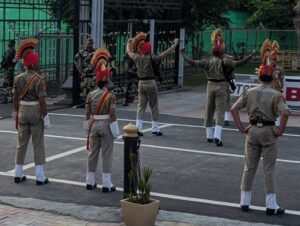Oman
A Warm Welcome
Technically, I had been to Oman once before. During a 36 hour drop off of a B-1 to Thumrait twenty years ago, I bought one of my most prized travel mementos. It even has it’s own family story. It was a plastic mosque shaped alarm clock that blasted Muslim prayers to wake you, with no volume control. Stephanie’s little cousins were playing with it one night, listening to the eerie (to Westerners) calls of prayer. Apparently, the kids never figured out that you could simply turn off the alarm by pushing a button on the roof. In makeshift fashion, to make the loud prayers stop they just advanced the alarm to some random time. Some time around two o’clock the following morning, as a whole bunch of us slept in Stephanie’s grandparent’s living room, the prayers went off, full throated as always. I woke up sure that terrorists were coming over the walls! I think I was not the only one.
Needless to say, the plastic clock took a lot of abuse over the years, and is now lost to posterity. One of my secret missions on this trip was to replace that clock. I needed to find something similar in Turkey, the Emirates, or Oman, I figured. This was my last shot!
Oman was very hot, but slightly less so than the Emirates. Muscat is also on the Persian Gulf Coast, so it, too is humid, but again not quite as humid as Dubai. Muscat is more a region than a contiguous city. It stretches out along the coast over 20 miles or so. There are several neighborhoods with vacant stretches between them: old Muscat, New Muscat, Mutrah, Seeb, and several others. It is far less crowded than either Dubai or Abu Dhabi. They even have a law against skyscrapers to ensure that the main mosque remains the country’s highest building. Muscat has a few malls and a newer “new town,” but it feels a lot less like a big city, or a showy place than Dubai. There are tourists, to be sure, but far fewer than in Dubai. There are less foreign workers as well, though there are some. We found people to be extremely welcoming and hospitable. It felt like a lot more of a genuine experience than our stay in the Emirates.
If El Paso were on the coast, it would look a lot like Muscat. High, barren, steep ridges and mountains with their own kind of beauty are all around. Some of the mountains in this part of Oman top 9,000’, creating an environment substantially less hot and humid compared to the coastline. Because of its proximity to the coast, Muscat has a maritime history and surprisingly good seafood. The Arabic dishes, with their succulent soft lamb buried in differently flavored beds of rice are tantalizing as well. Beef, on the other hand, was rare in Oman.
We entered and left Oman via Air Arabia. This was not on purpose. We had planned to see more of the country by traveling from Dubai to Muscat via bus. The bus, however, was inexplicably canceled on short notice. Fortunately, short notice plane tickets in other parts of the world are not priced the way they are in the U.S. We grabbed round trip tickets just a day or two before the first leg and in the process cut seven hours off of an eight hour trip. This also made our return to Dubai for the leg to Amritsar quite a bit more secure.
Air Arabia did not offer all of the free perks we received on the Azerbaijani state airlines. It was populated by a large contingent of travelers who were either on their first commercial flight, or for whom flying was a very rare occasion. The numbers of people clutching their seats during takeoff with clenched teeth was pretty high. But there were also a lot of selfies, phones snapping photos out the windows, and people proudly catching images of the (very common) Airbus 320 on which we were traveling. We experienced another distinctive part of traveling Air Arabia during the departure preparations. Wedged between the safety briefings and takeoff announcement was the playback of a recorded Islamic travel prayer. I used the time to say my own, though I felt no extra trepidation about this flight than any other. The personnel and equipment all seemed professional and well prepared. It was a good experience.
The flight from Sharjah – a secondary airport near Dubai – to Muscat took only about an hour. We were on the ground before noon. The public transportation was clean and comfortable in Muscat, but the layout of the city and the distance to a few of my planned day trips was so far that renting a car was the obvious choice. I had no problems accomplishing this, even on my temporary, printed out driver’s license. My original was lost on a bridge in Budapest a month earlier. Renting the car set me back only about 10 Omani rials per day ($26).
(Continued)
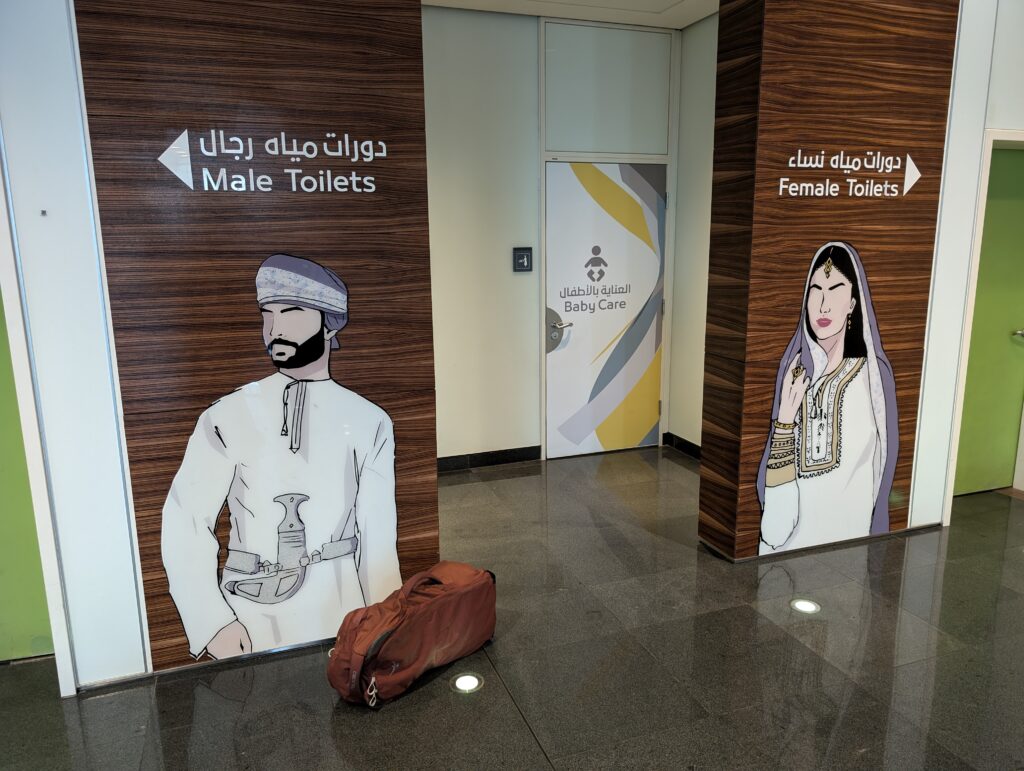
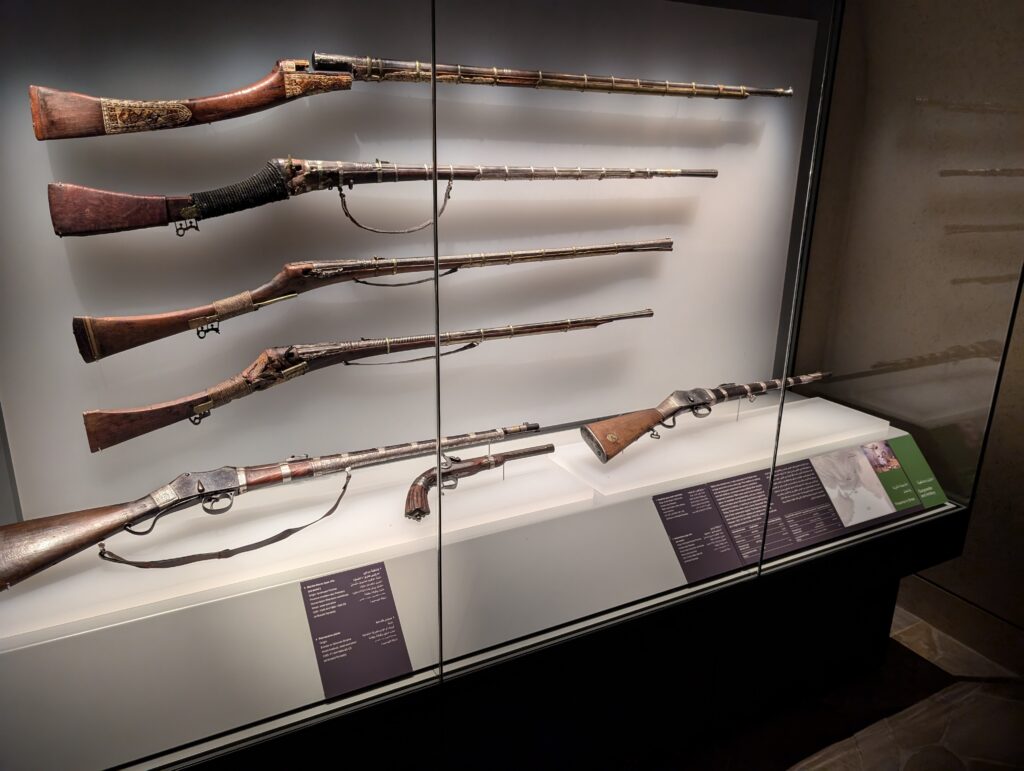
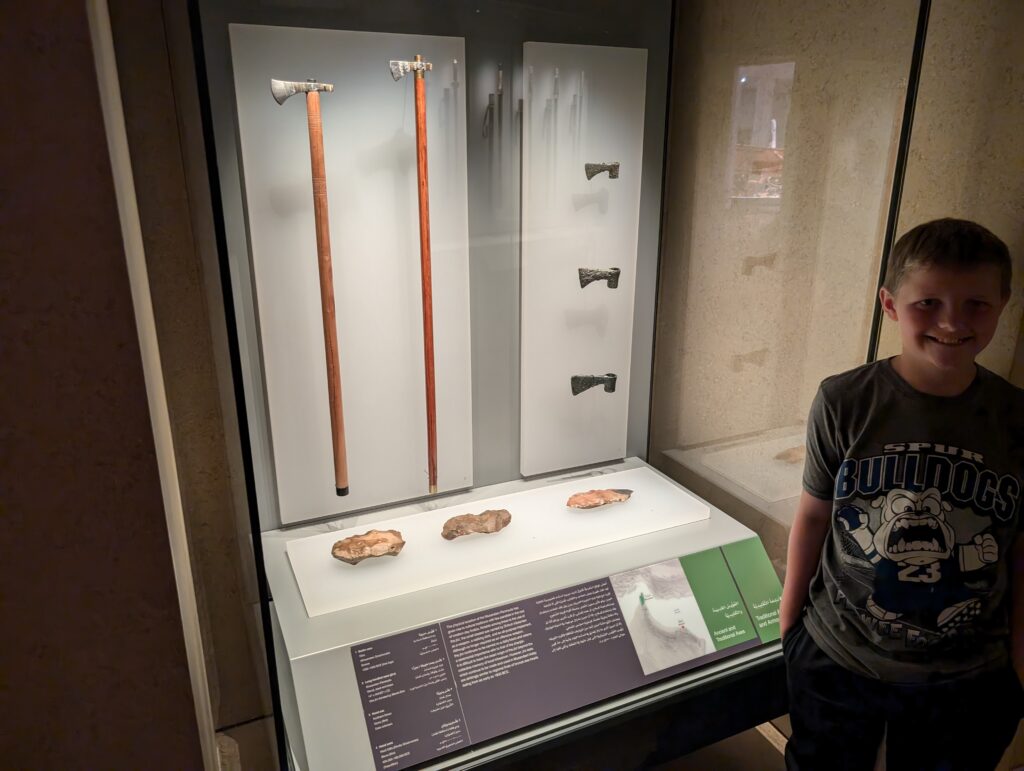
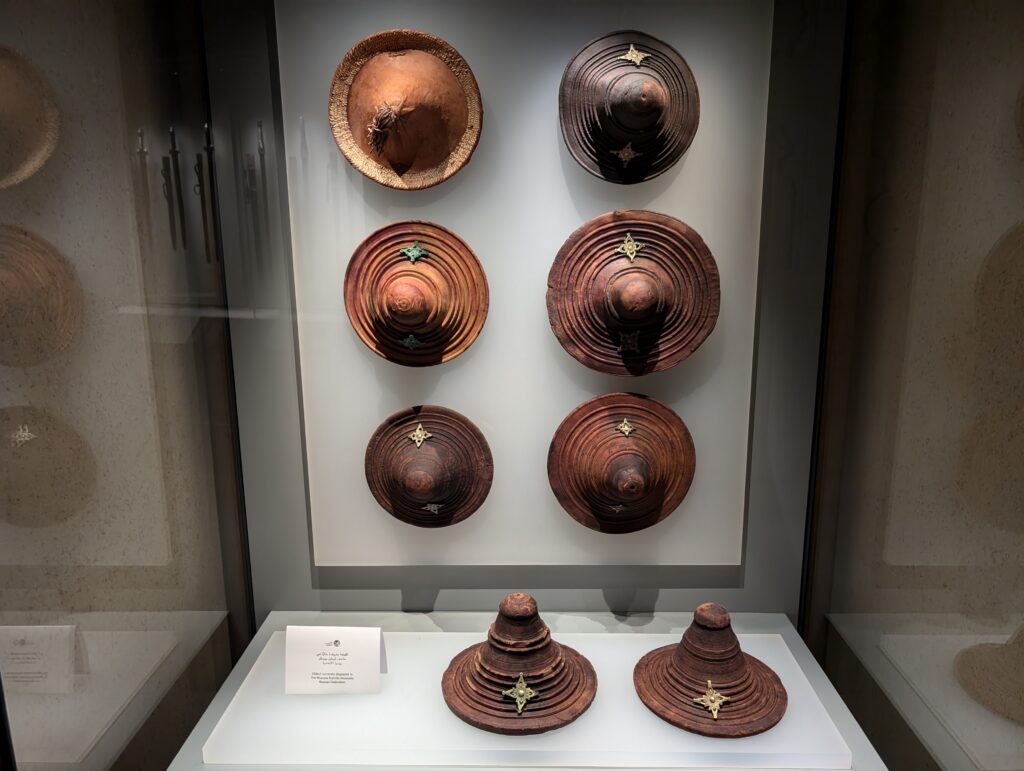
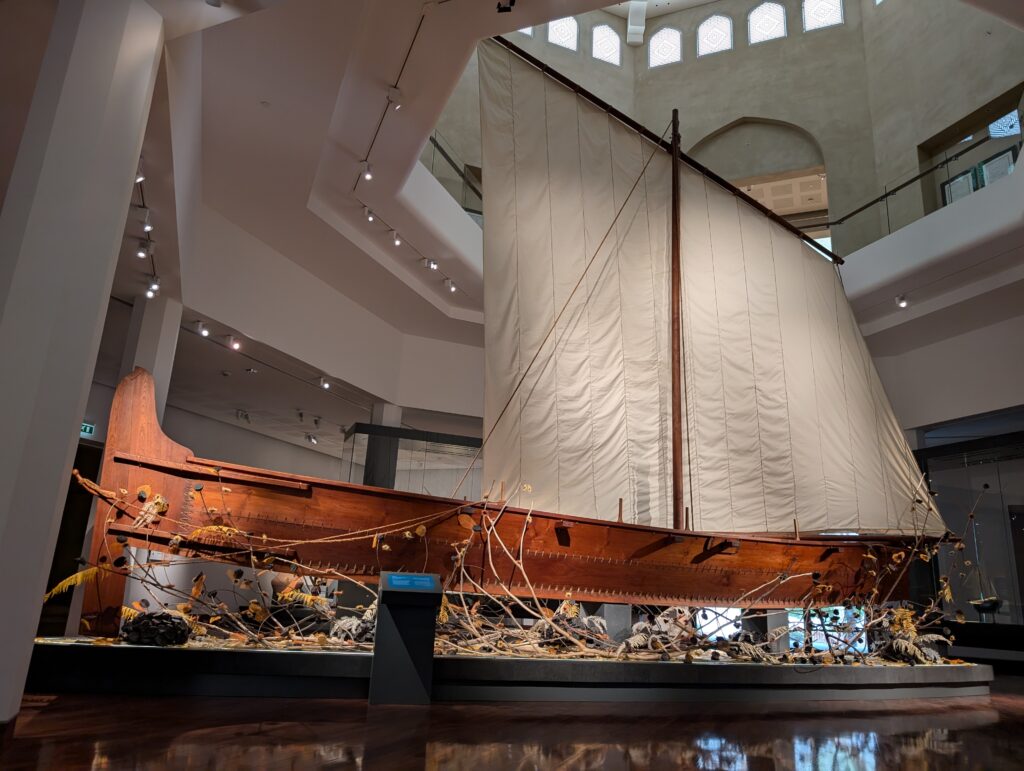
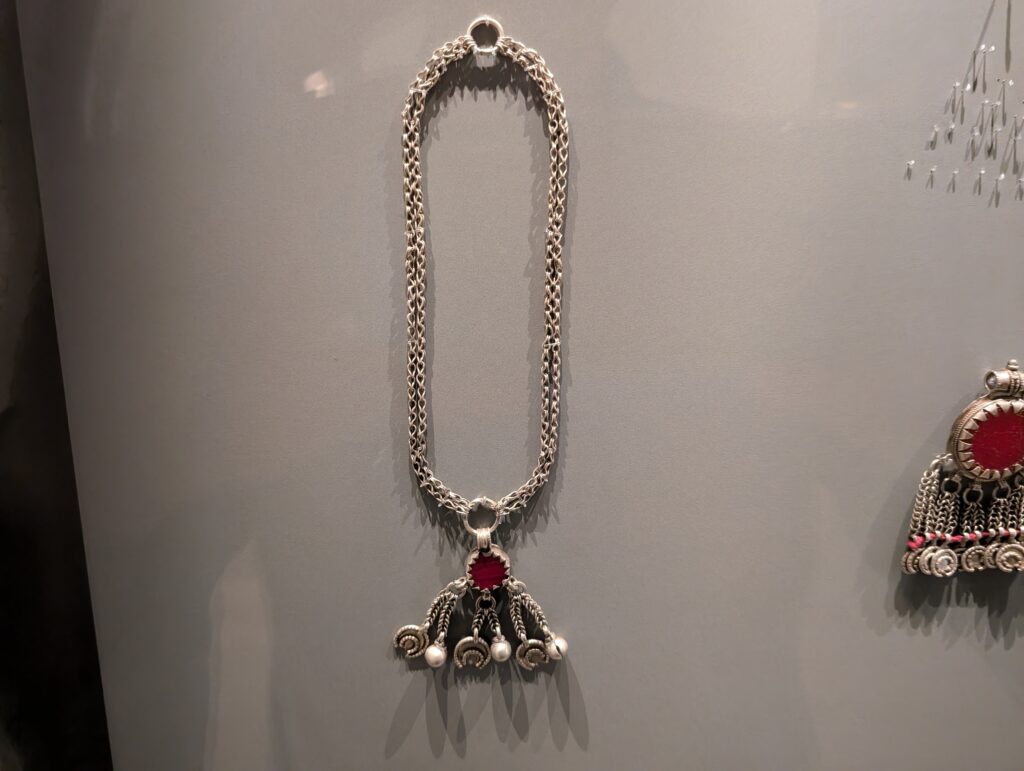
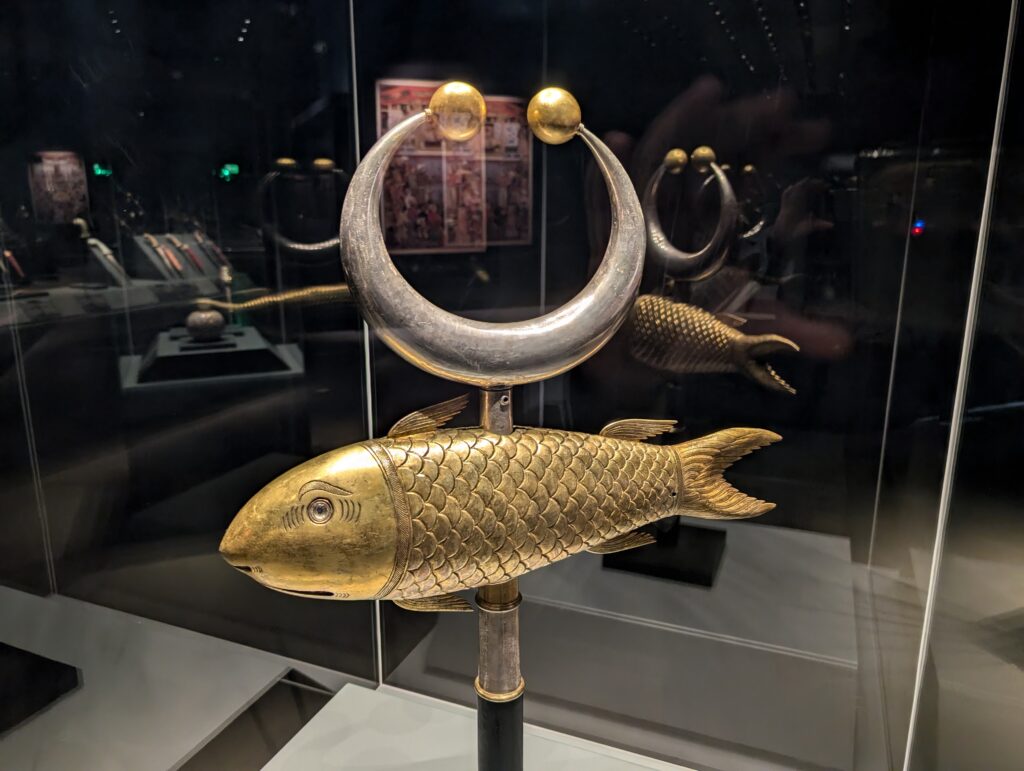
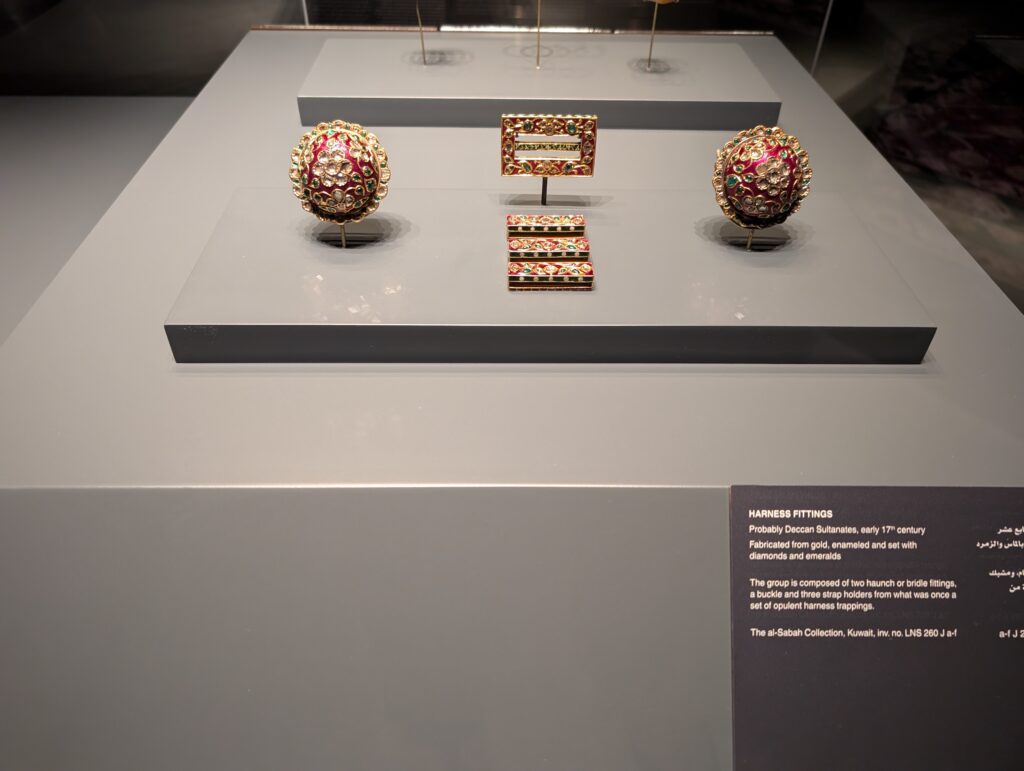
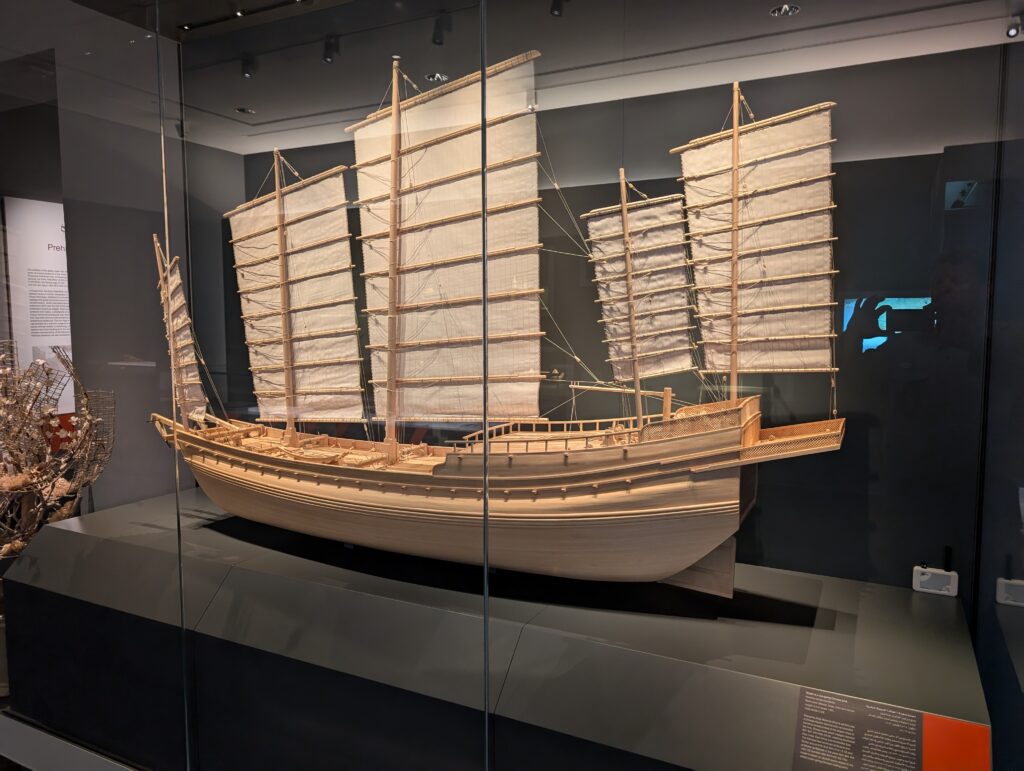
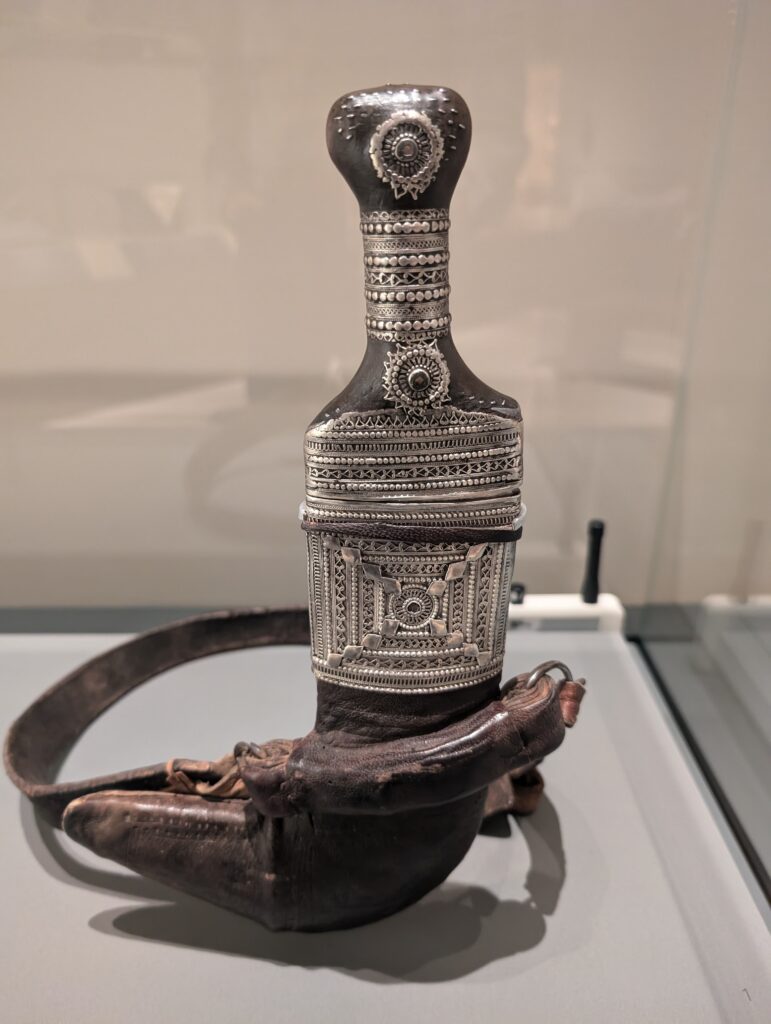
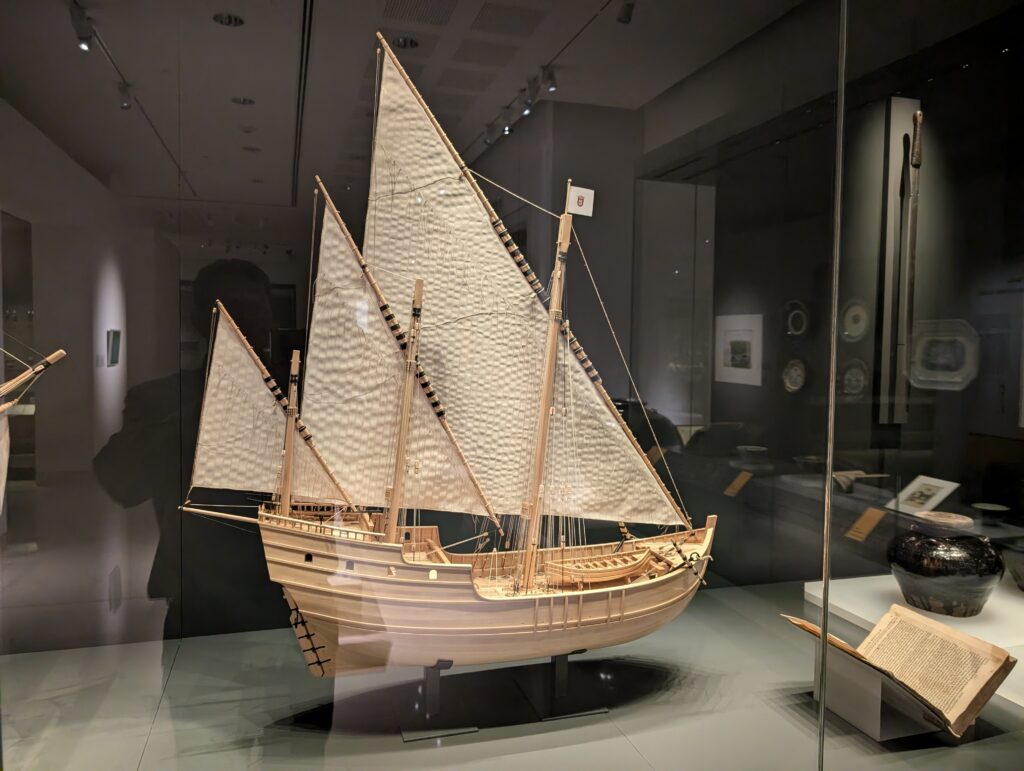
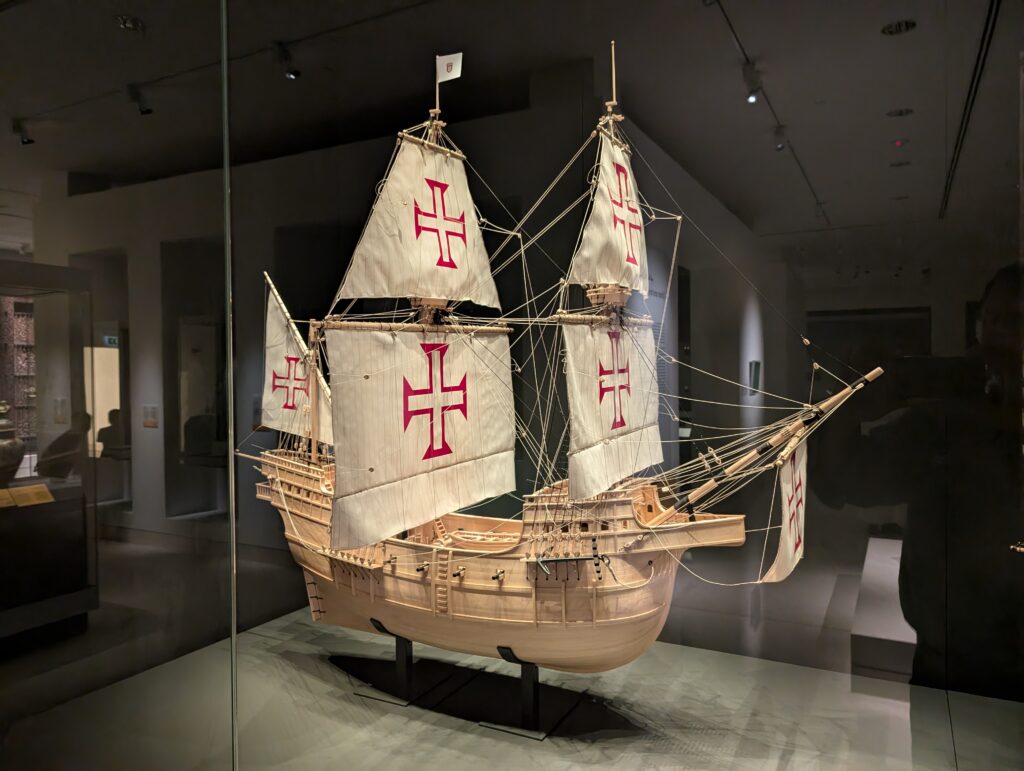
After walking the souq in the heat, we headed to the very well air conditioned national museum. This museum had a 5 rial entry fee for foreigners. It was a well-organized museum, that attempted to tell the story of Oman from the dawn of time until very recently. Other than there not being much explanation of how or why there had been a Portuguese presence in Oman, it was pretty well laid out. As numismatists, both Caleb and I were disappointed to see the currency display closed. They did have nice sections on Oman’s maritime history, its traditional dress, jewelry and weaponry, and a section on forts and military architecture. There was additionally a large exposition of Indian artifacts on loan from a Kuwaiti collector with a special affinity for that culture. It was an impressive collection.
Many Americans probably don’t know that Portugal was a titan of world trade in the 15th and 16th centuries. Once the Ottomans captured Constantinople and effectively closed off the land trading routes to the Far East, European traders were forced to seek different routes to their trade destinations. This made life difficult for traders from the Italian city states. Of course, the Spanish sponsored Columbus’s expedition to find a direct route across the Atlantic. The Portuguese, on the other hand, opted to stick to the (at least somewhat) known world. Portuguese explorers and traders sailed around the Cape of Good Hope and sought out ports along the coasts of the Arabian peninsula, India, and all the way to China and Japan. They often captured and held ports in those places. There were Portuguese colonies at Goa, Macao, Nagasaki, and all around the African coast. For a couple of centuries, they held Muscat as just such a post. Two forts from the Portuguese occupation command either side of the entrance to the old Muscat harbor. The museum explains how the Yarubid dynasty expelled the Portuguese, but doesn’t really say how or why they were there in the first place.
The Omanis had their battles with the Arabs and Ottomans, but the Europeans were the biggest thorns in their sides. Oman continued to strengthen after their expulsion of the Portuguese. Not only did they rule this part of the Arabian peninsula, their empire eventually stretched to East Africa and as far South as Zanzibar (in modern Tanzania) and Madagascar. After signing a treaty of protection with Britain, eventually a succession crisis led to their empire being divided into Omani and East African sultanates. During the late 19th century, Oman became a British protectorate. It regained independence in the 1950s as Britain voluntarily devolved its empire.
It was a good museum on the whole, and kept us entertained and cool until supper time. I had a tasty shuwa dish, and we called it a night. The early morning wake up to travel and the late nights at the Burj Khalifa and returning from Abu Dhabi had wiped Caleb out. He slept until after 10:00. By the time he was up and had eaten breakfast, it was nearly lunch time. We used the remainder of Monday to explore the rest of the local sights. We went to Al Mirani, one of the Portuguese forts. I was under the impression you could walk this site free of charge. Recently, however, the Omani government decided to restore the fort and turn the inside into an art museum. Having spent a significant amount of money on the exterior restoration work, they charge a steep 10 rial ($26) admission. If this were the Omani version of the Louvre, it might justify that. At this point, though, the museum was empty. Once complete, it would be mostly an art gallery, but there was no art in it. They had a single room of 19th century military artifacts that were not displayed or labeled. It is hard to imagine how they justify charging people to enter at all. Alas, hopefully one day they will complete the work. Then, at least the art aficionados will get their money’s worth. Other than a few nice views, this was kind of a wasted stop. I could have snapped a couple of pictures from a distance and got just as much out of it.
The second Portuguese fort underwent its restoration years earlier, but it is closed to the public. It is used for state visits and to entertain foreign dignitaries. I took my pictures from afar and felt fortunate not to have shelled out another 10 OMR. Another interesting building that is off limits to the public is the Al Alam palace. It is a good photo op, but nothing more. Most of the rest of our afternoon we spent shopping for equipment we could use on a hike that would involve walking through a creek in a few days. We enjoyed another Arabic style meal.
(Continued)
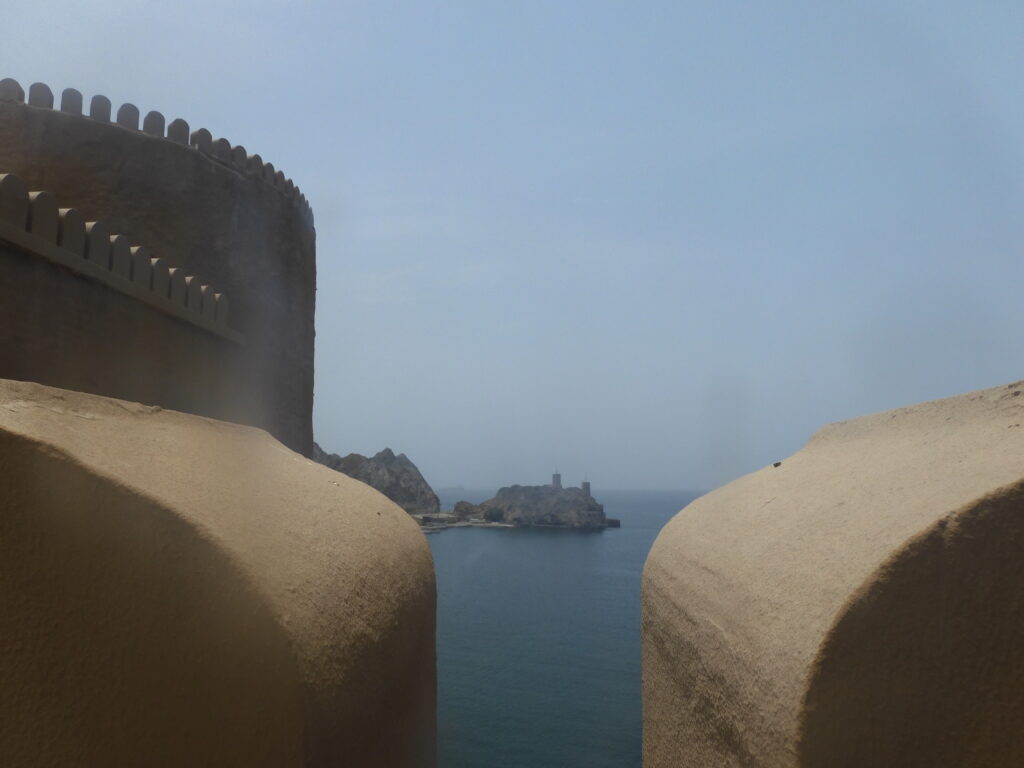
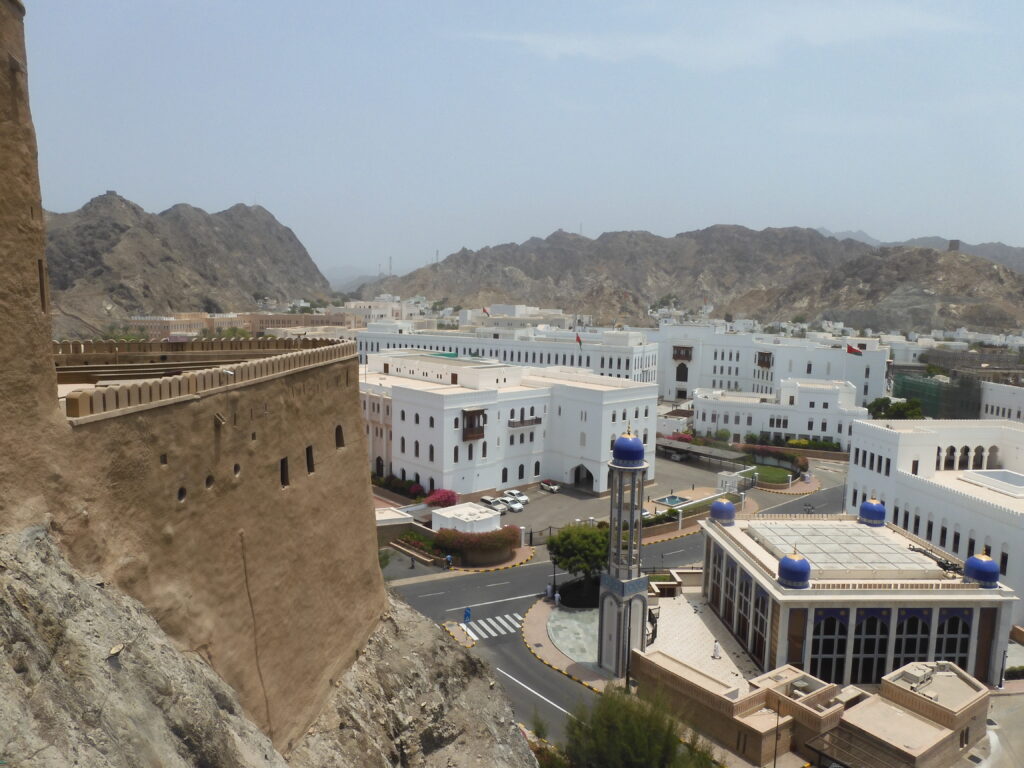
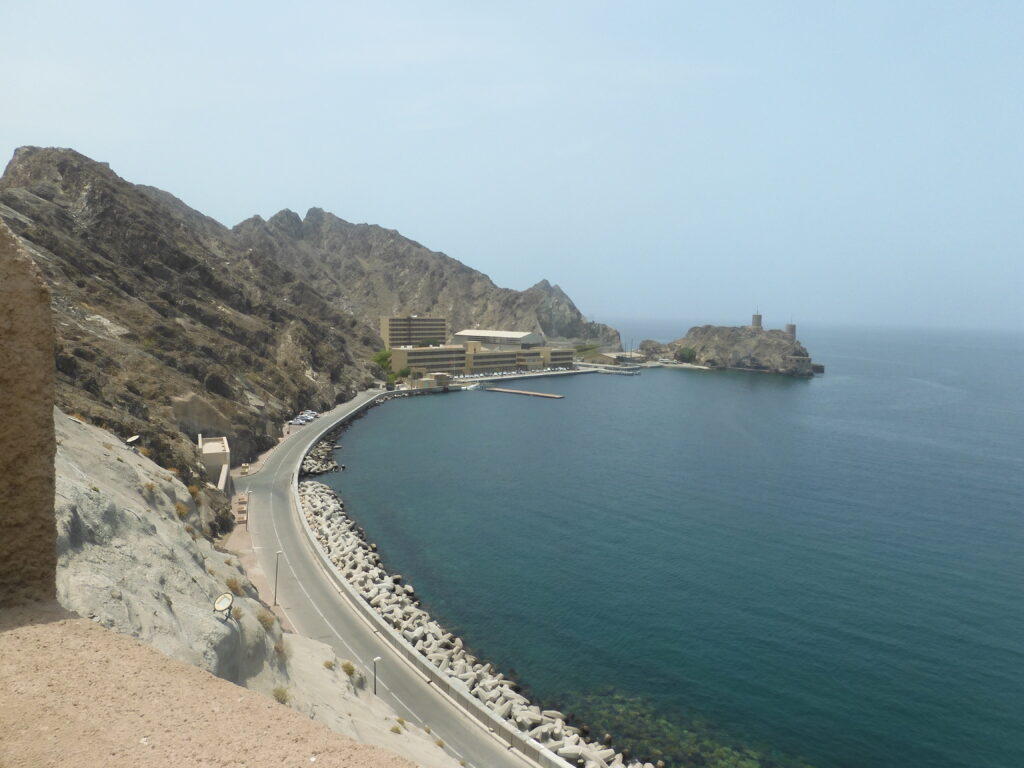
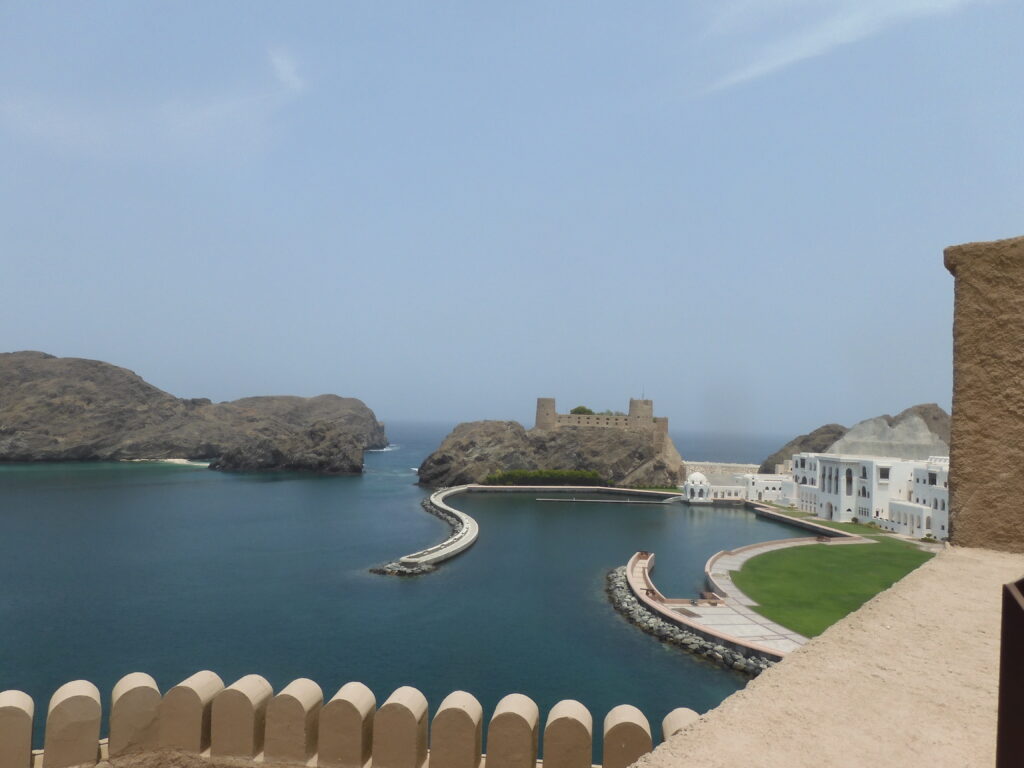
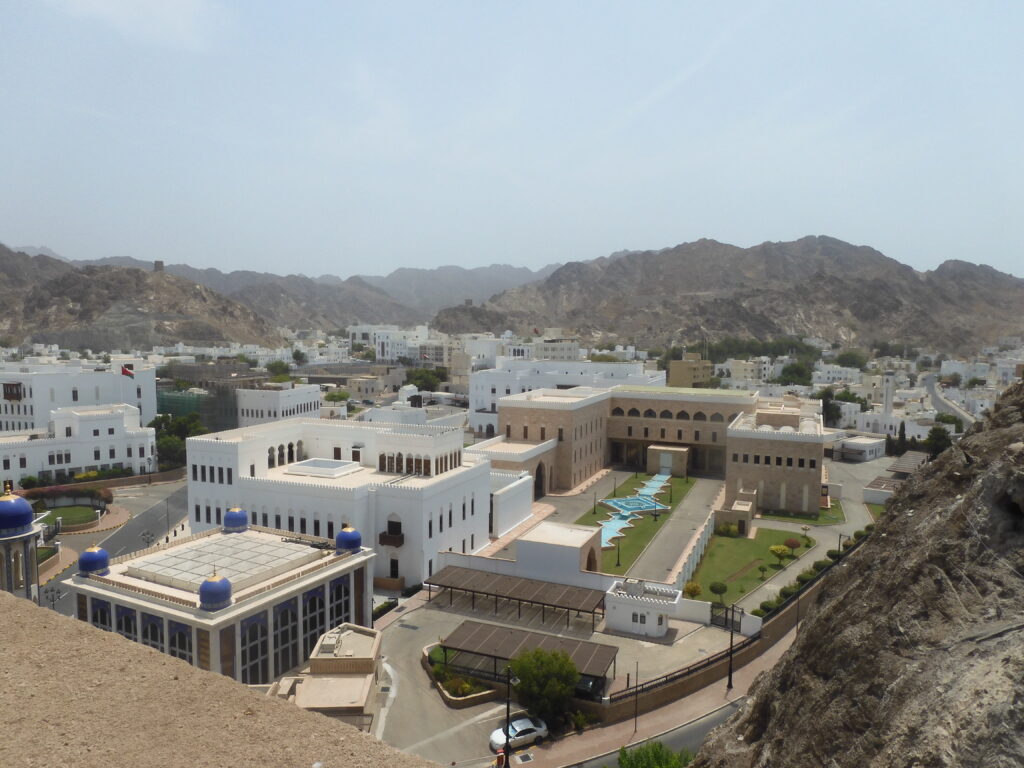
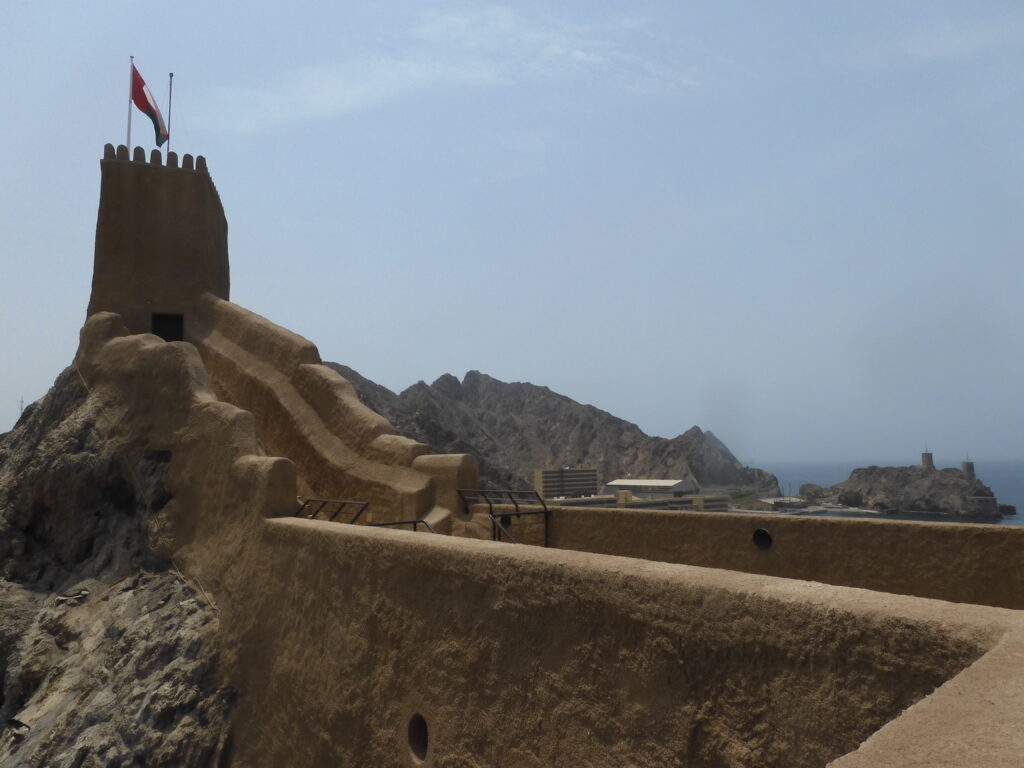
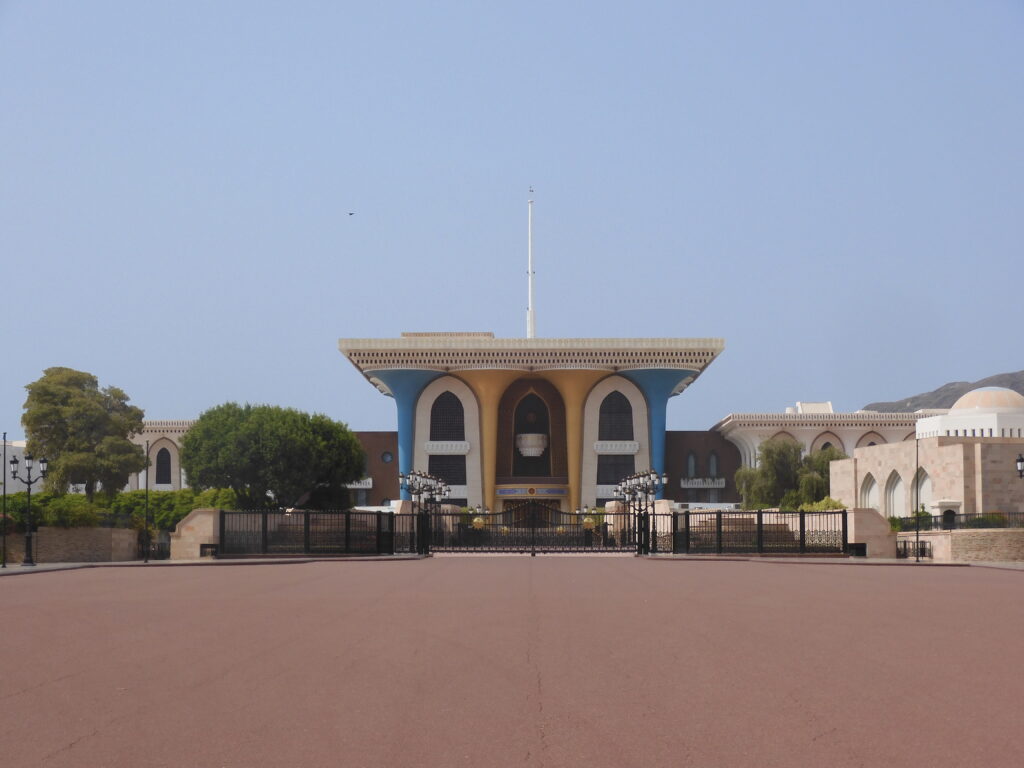
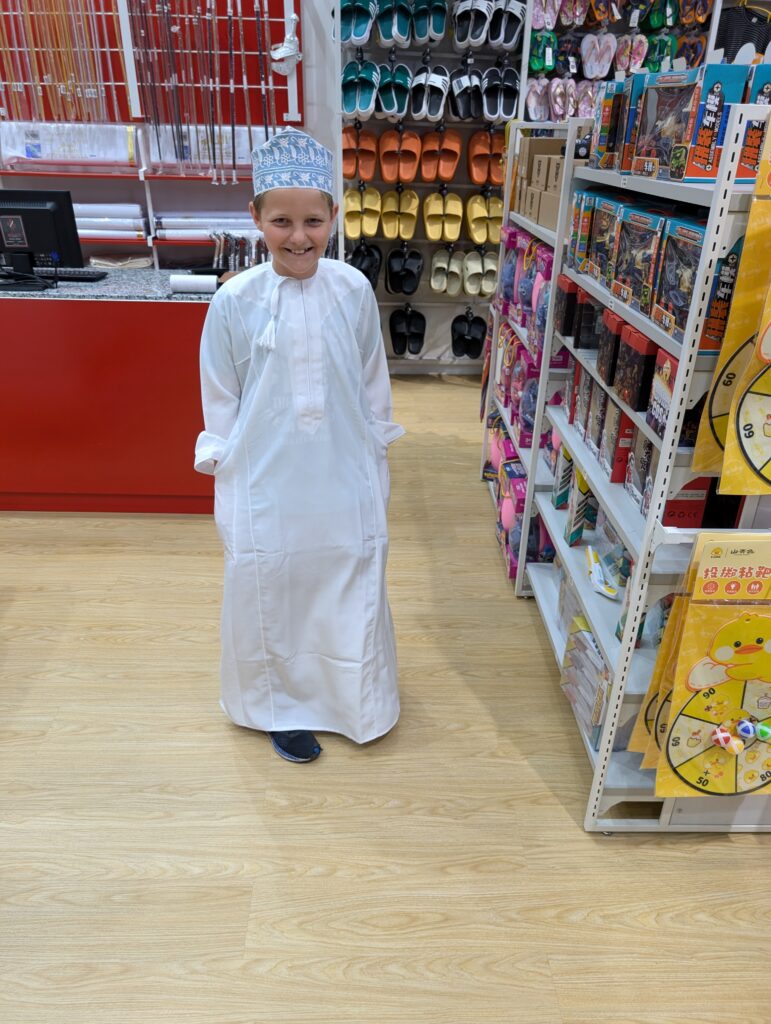
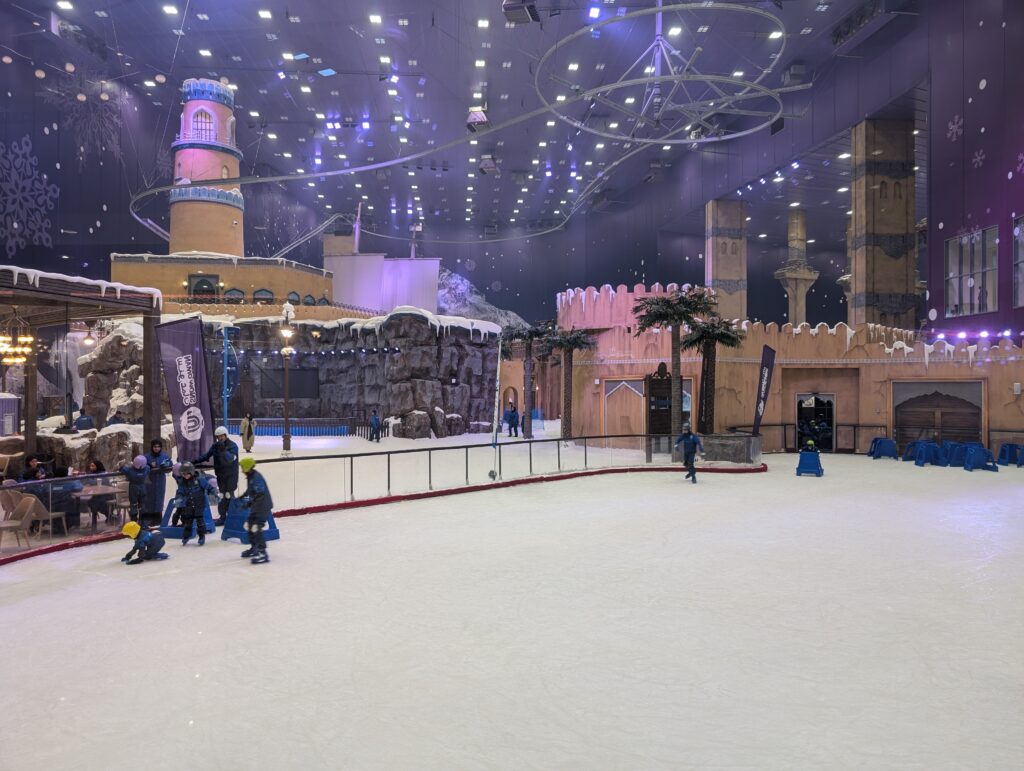
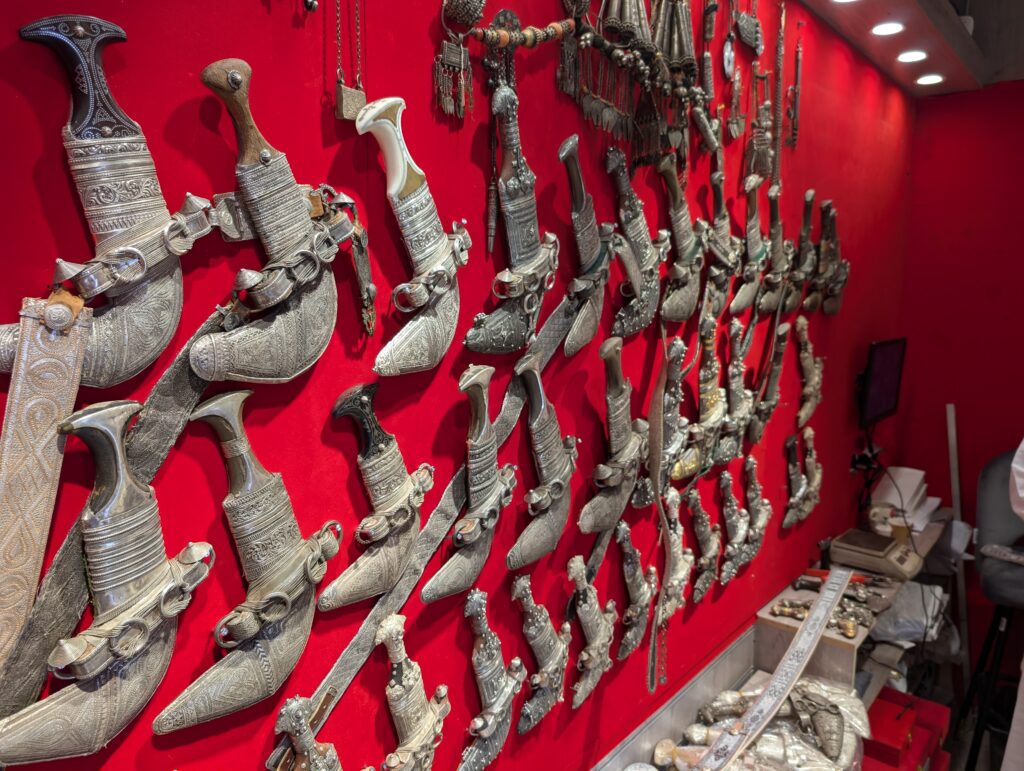
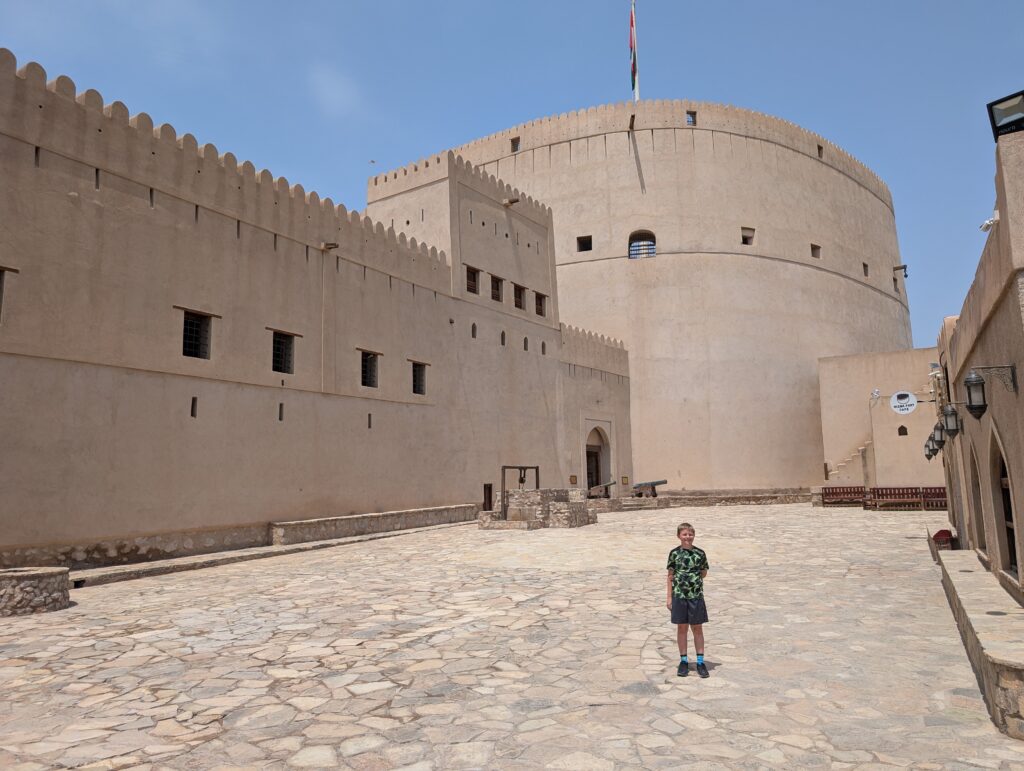
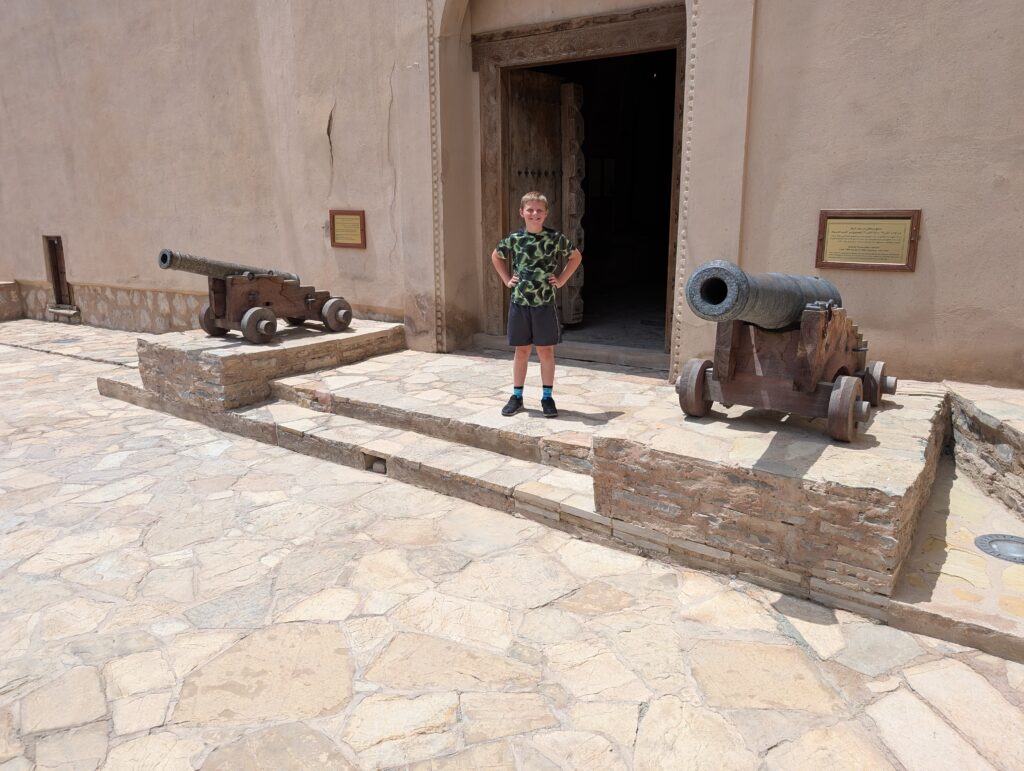

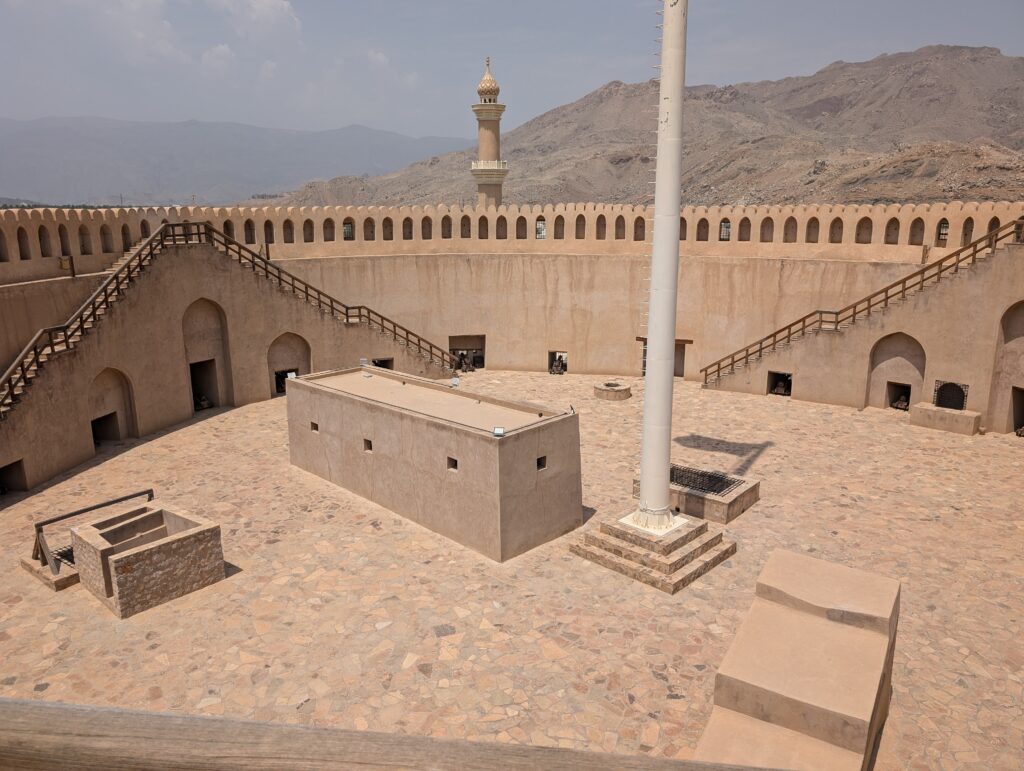
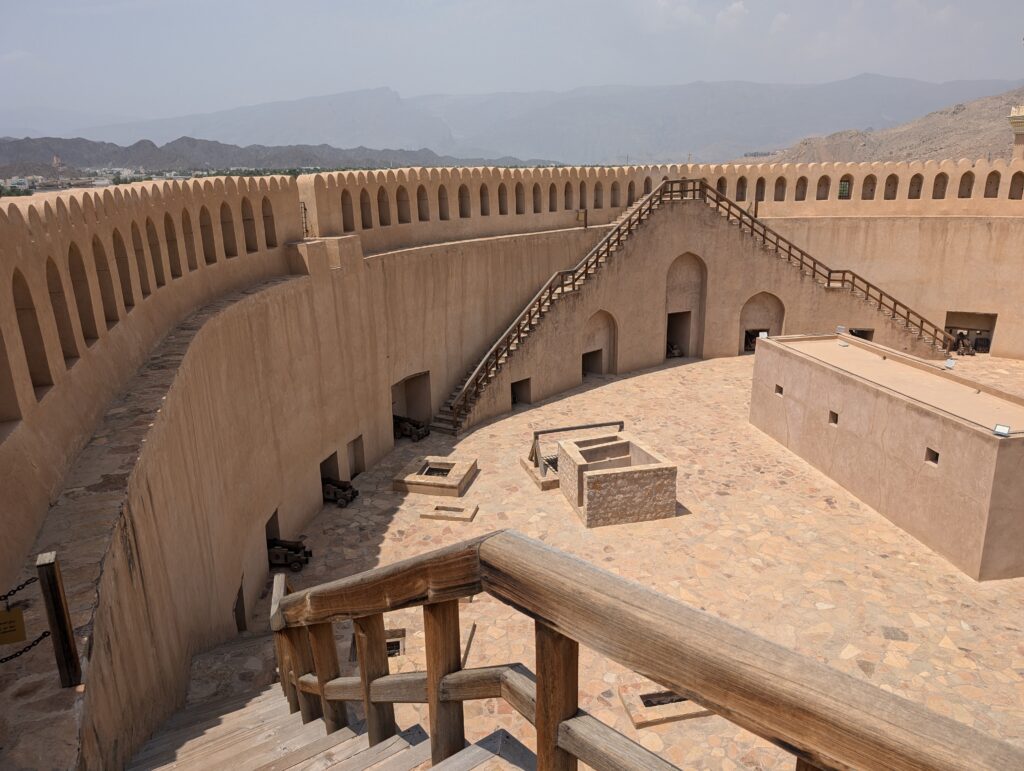
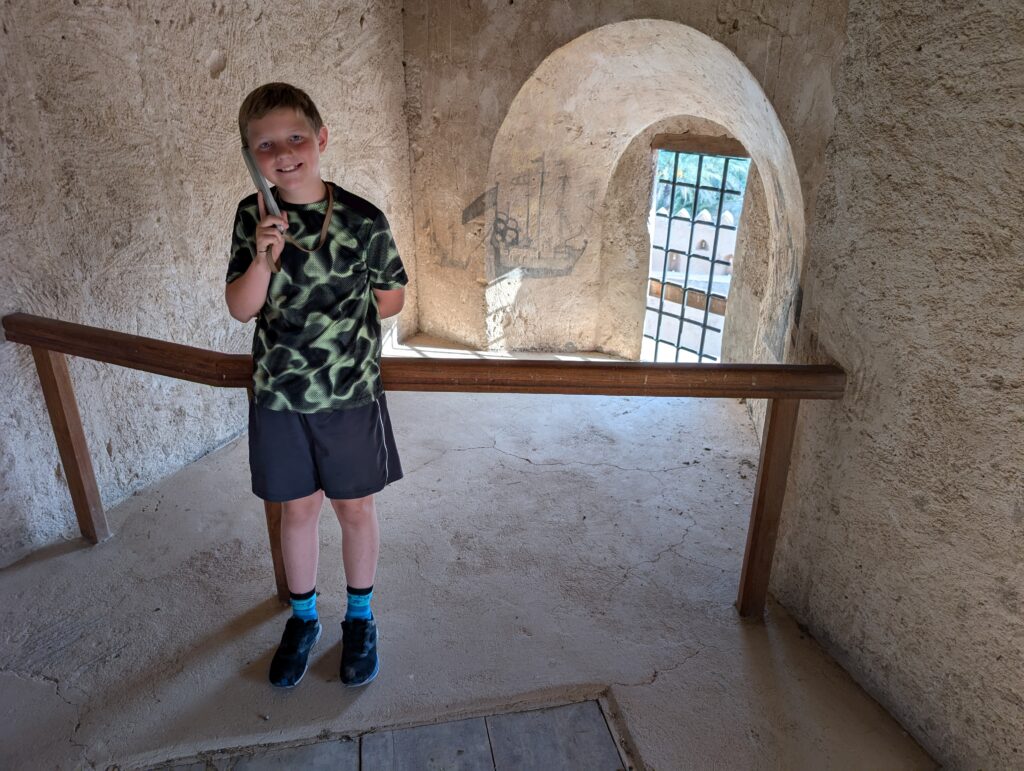
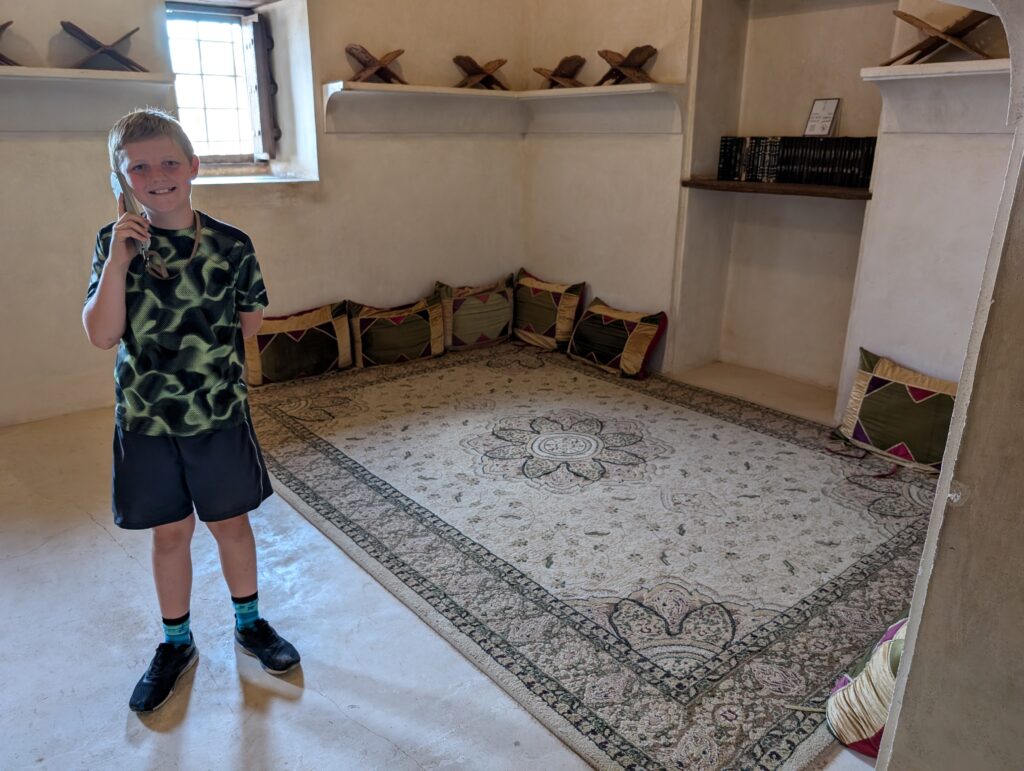
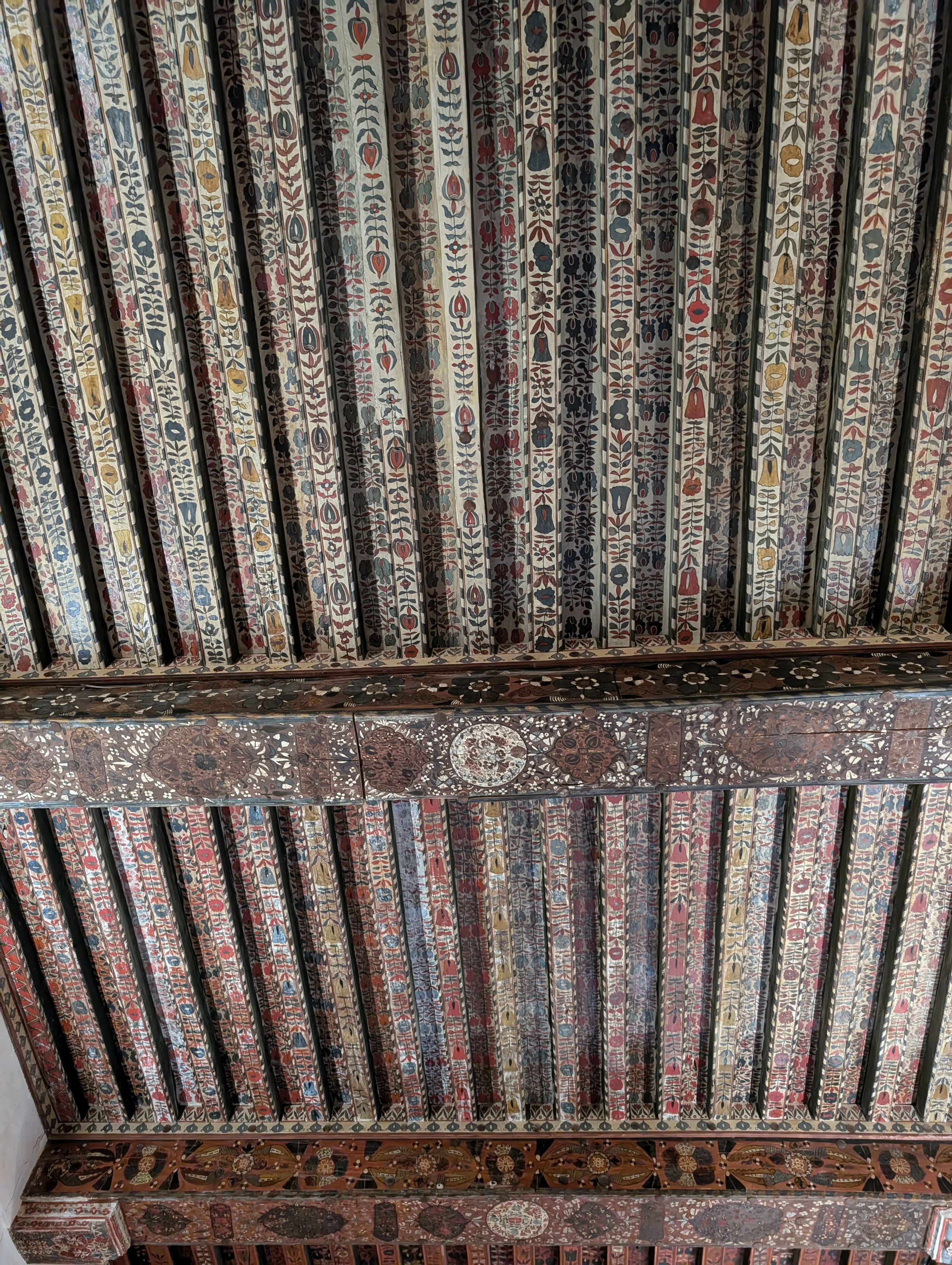
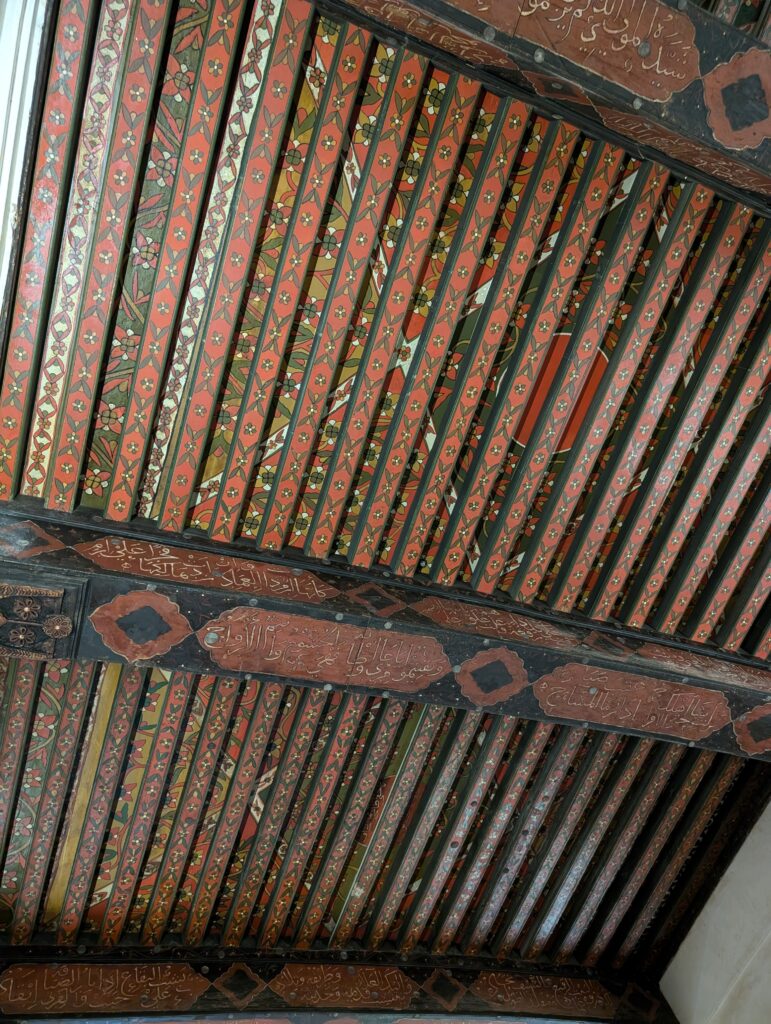
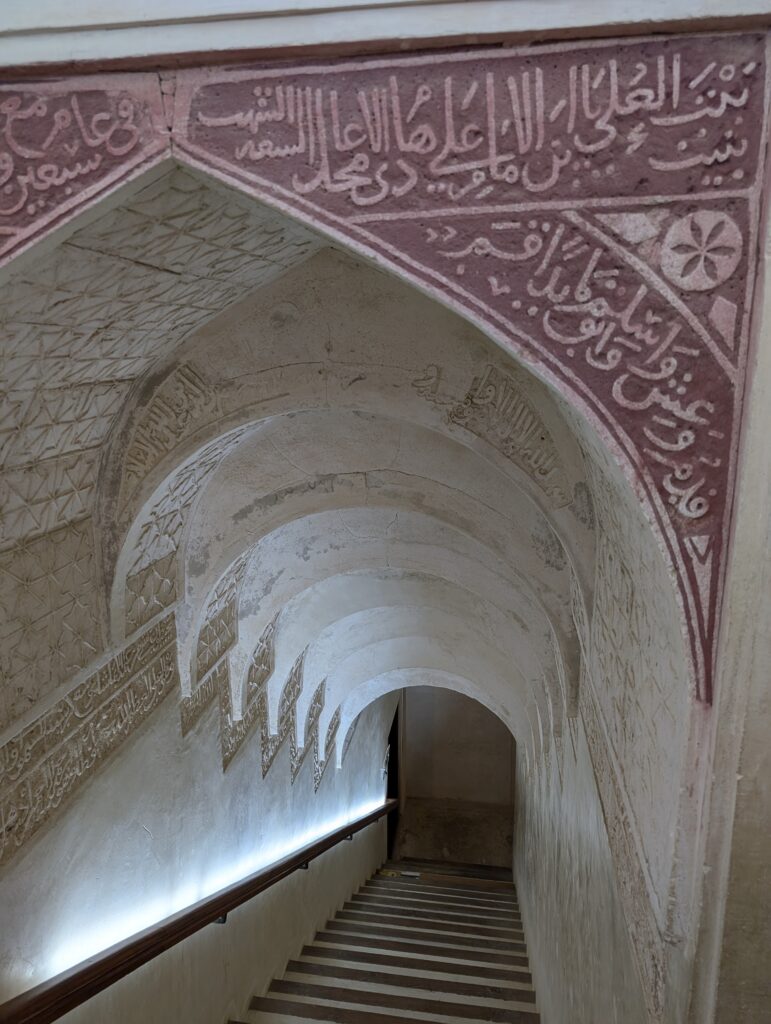
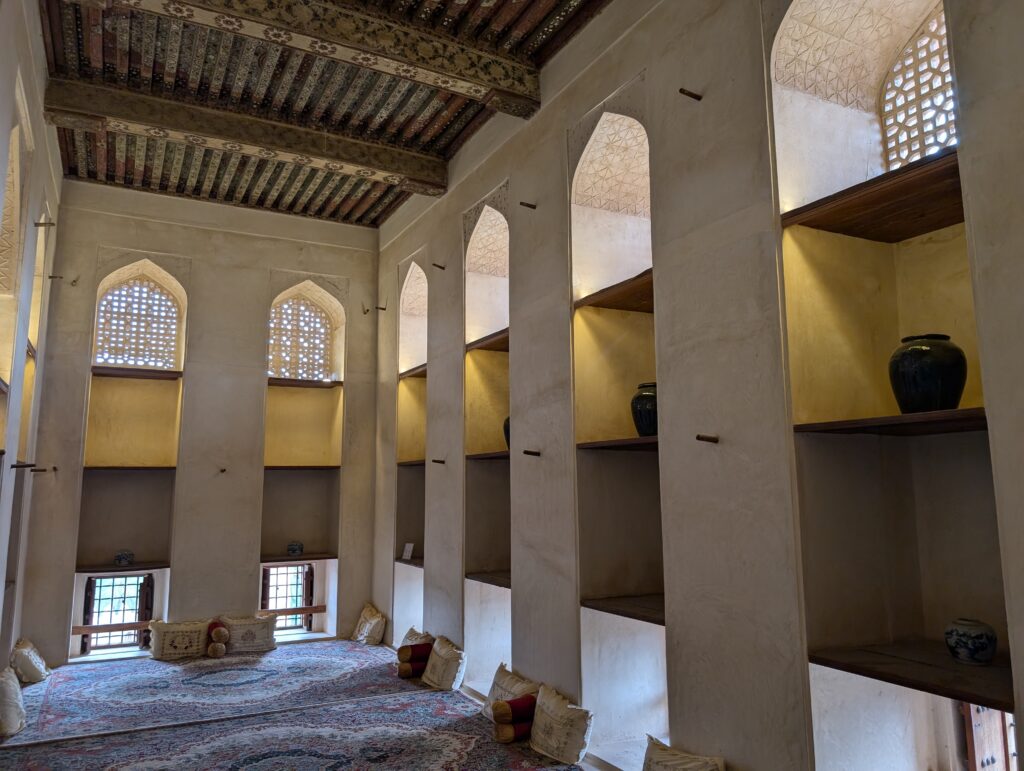
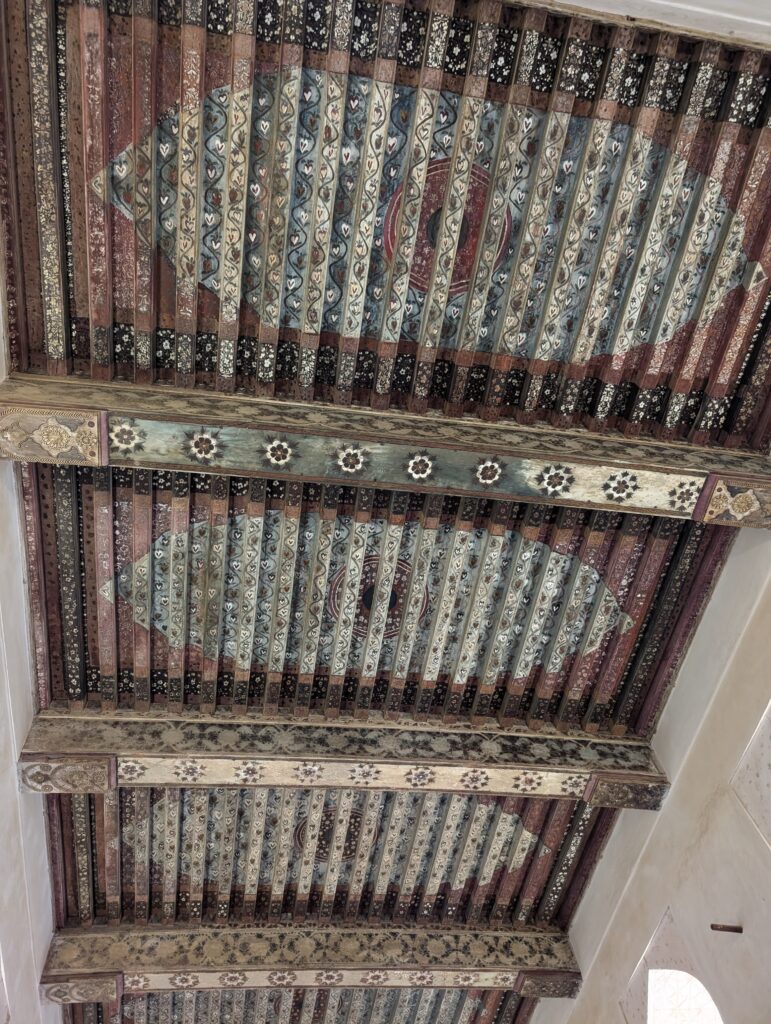
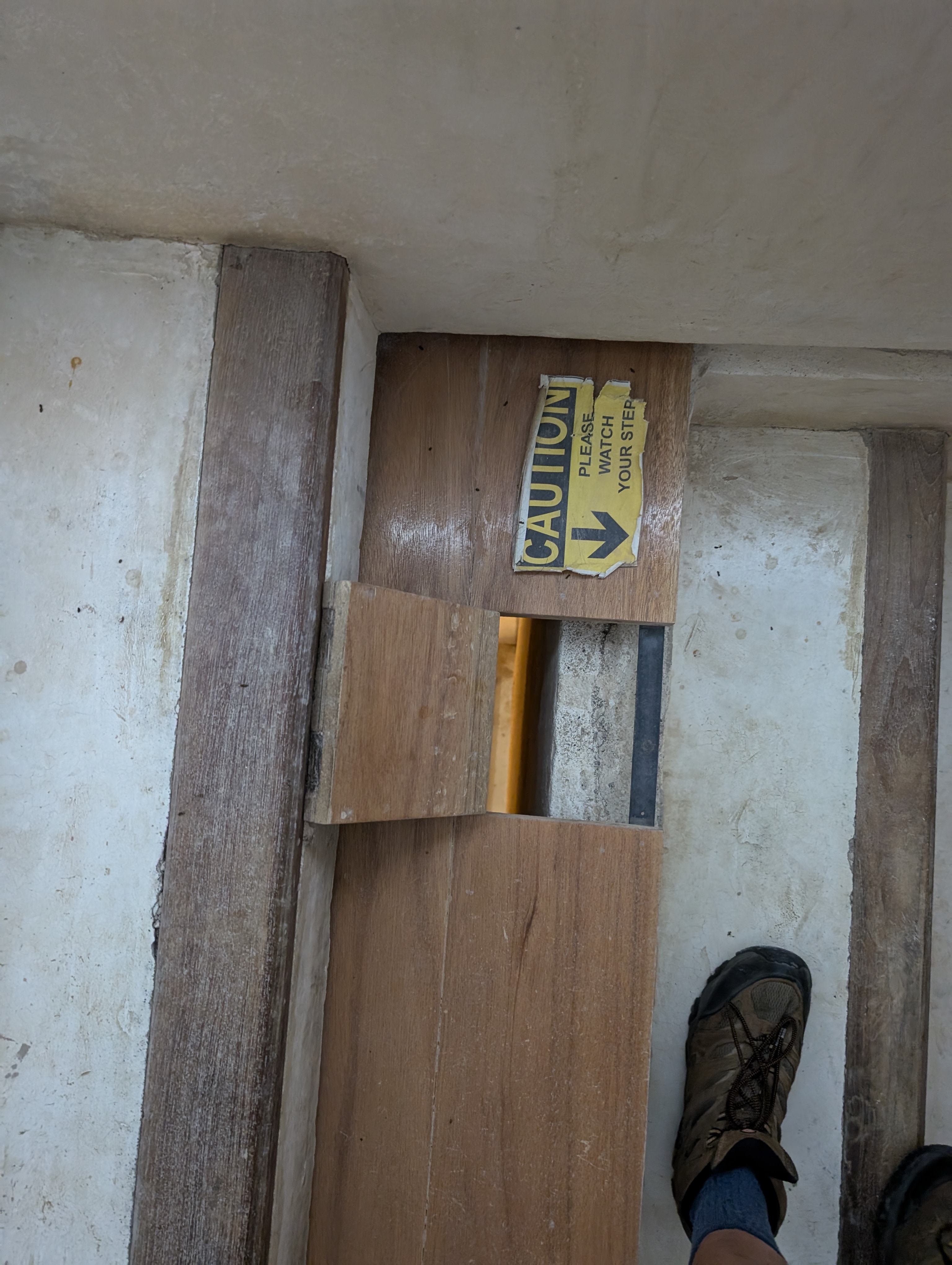
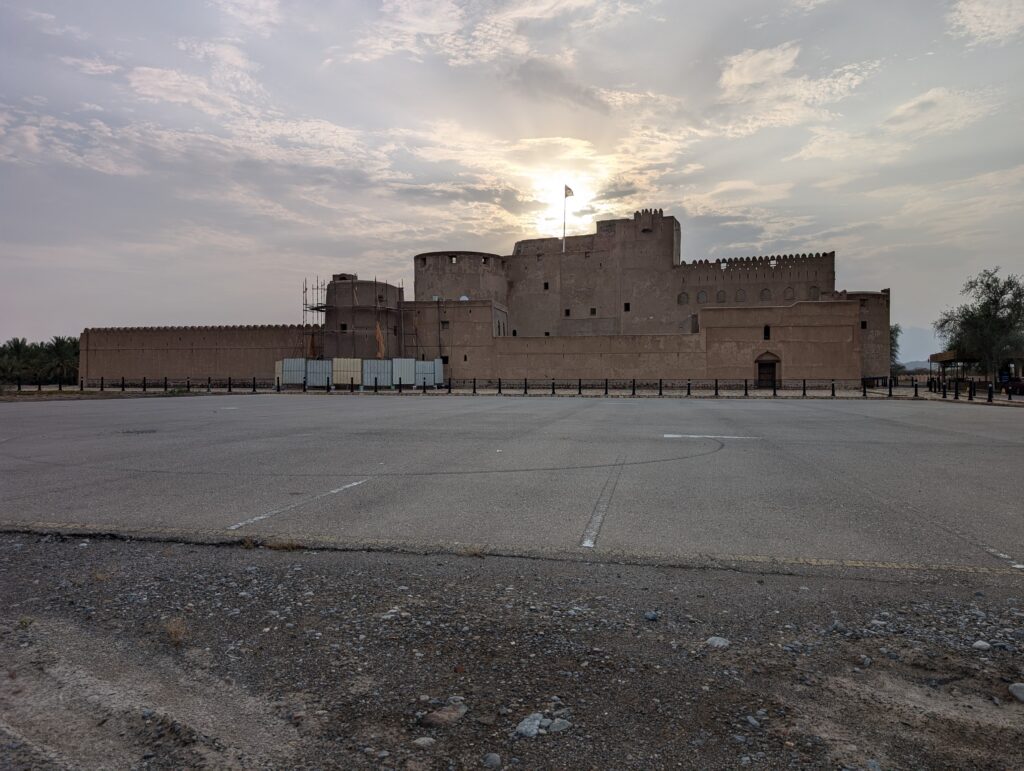
Caleb slept in yet again, giving us a late start on our forts and castles day trip Tuesday. We went first to Nizwa. We visited that souq, which had an amazing collection of khanjars. These are the traditional sheathed curvy daggers worn as dress items by people in this part of the world over their dishdashas. They were so awesome, I was highly tempted to take one home. It is probably for the best that I could not figure out how to make it happen. It would be no problem to stick a khanjar in your checked baggage. I had no idea how I could get it through several more land borders, though. For that matter, I only had carry ons. UPS’s website says specifically they won’t ship khanjars. Rather than risk the confiscation of an expensive souvenir, I figured if I still wanted one when I got home I could order it. Like I said, that’s probably for the best. I’m sure I could have haggled them down some, but the least expensive full sized khanjars were marked at about 300 rials ($780).
Nizwa has a historic castle and fort. In earlier times, and when Portugal dominated the coast, Nizwa had been the national capital. It therefore had a sizable fortification with royal living quarters. The living quarters were modest by European standards of the era, but the fortifications were impressive. Multiple wells ensured the post could withstand lengthy sieges. The walls seemed equipped to ride out gun powder era bombardments. Intricate entry systems provided protection should a few enemies get through the outer defenses. They had “murder holes” similar to what European forts have to accost enemies in the portcullis. Instead of tar, the Omanis were prepared to dump boiling date syrup on the intruders. This seems just as bad.
We attempted to visit Bahla fort, about 20 kilometers away. It is the largest mud brick fort in the world. It really is big. We could only see this place from a distance though, and walk the outside of the walls. Although the posted hours said it would be open from 8:00 to 20:00, it was locked up tight with no indication of a reason for the closure or a return time when we arrived at 16:00. We circled the place on foot once, looking for someone to ask about getting in. There was another former royal palace and fort not too far away, so we decided to make Al Jabreen our last stop.
Al Jabreen was constructed by Imam Bil Arab, who split the capital between Nizwa and Al Jabreen. He ruled from Al Jabreen for 14 years, after which he was deposed and killed by his brother, a surprisingly common occurrence in the Muslim world during this period. Al Jabreen has a couple of rooms that look like they could be a royal residence – at least one that would serve in an Arab country in the 17th century. The royal apartments and prime guest quarters had intricately designed wood ceilings that had survived to the present through some miracle. An expertly designed system of upper and lower windows pulled a surprising amount of air through the living quarters undoubtedly helping residents deal with the heat. The sultan’s burial site was in the lower part of the building.
It had similar fortifications to the other Omani forts we saw. One other interesting feature was a trick stair. Many of the entry staircases had Pafford sized steps. These were designed to prevent a non-Pafford sized person from ascending the stairs quickly. The fourth stair from the bottom was left with a loose covering so it would make a big racket when someone stepped on it. If the royal resident was particularly nervous, he could have the whole step cover removed so a potential assailant would step through a slender hole in the staircase in the dark and ruin his foot.
Construction prevented us from going on the roof at Al Jabreen, but we could observe the hot, rugged, El Paso-like mountains around us from the ground. We had seen them from on high at Nizwa. I grabbed a to go plate on the way home to eat in the room, in hopes that we could get a bit earlier start on Wednesday. I managed to roust Caleb at 7:00 and we were out of the house for our day of hiking in the Omani heat.
We went first to Wadi Shab. For me, Wadi Shab was the highlight of our visit to the country. Wadis are valleys or draws that slice through the tan ridges running streams of water toward the coast. The greenery at the bottom gives of an appearance like an oasis. There are date palms and other greenery along the wadi floors, creating a very distinct palette of colors. Wadi Shab has enough water to grow lilly pads at its mouth.
We found the Wadi Shab trail head under a bridge along the coast. We paid a fellow with a wooden dinghy one rial to haul us across the murky lilly pad filled area to the dry ground on the far side. It didn’t take much hiking to work up a sweat, though the hike was not particularly taxing. We walked slowly and the terrain was not steep. We made our way through small, semi-abandoned date palm plantations with channels like acequias diverting bits of water to them. We hugged the canyon edges where smooth, slick rocks marked occasionally by spray painted arrows directed us upstream. We saw a few green pools here and there. Sometimes we had to cross the creek or wade up it in ankle deep water for a few yards. The scuba shoes I bought in Muscat paid off here.
After about 3 kilometers, we came upon the first big pool. By this point, the water was clear enough to see the pebbles at the bottom of the stream even though the water was in some places over my head. Here, you abandon your pack unless it is water proof and swim the first pool. The canyon is too narrow to walk any further. We desperately wanted in the water by this point anyway. We swam and treaded our way across the long pool, through dark green water, with bits of moss along the rocks once we came to another shallow spot. It got shallow enough we walked again, though this time through water alternating between knee and ankle depth. The rocks were sometimes dangerously slick here. We picked our way carefully to the upper pool.
I really wished we had a waterproof camera to have captured the scenery of this upper pool. We got back into deep water and swam. At first, I would now and then find a rock where Caleb could stand and rest once in a while. Eventually, the water just stayed deep. At the far end of the now crisply emerald water, there was a tiny crack in the rock. I had read there was a cave at the head of the last pool. Caleb said he saw the cave, but it looked far to small for me to pass. I asked Caleb if he wanted to go, but he seemed reluctant. I swam over to the fissure. It looked skinnier than it was, because it meandered right and left a bit. Even so, the opening above the water was not twice the width of my head. Fortunately, the rocks widened out significantly below the water line so that even if my head or chest would not have fit, as long as I kept my mouth out of the water, I could get through just fine below the surface.
We continued this way for about 30-40 meters before the fissure opened up in to a deep green pool fed by a waterfall for which we could not see the source. The stream seemed to come from nowhere down through an immense stack of light orange boulders bigger than buildings. The whole area was maybe a 20 meter circle. The water was a lot cooler in here. We stayed and enjoyed the crashing, cool water and the white noise, contemplating the uniqueness of the experience. What a place! I suppose it wasn’t the most beautiful place in the world, but I am certain it was the only place exactly like this.
Eventually, we treaded and swam back down to the lower pool where by now there were a few other swimmers. Caleb dragged the stay out as long as he could. It was going to be a hot hike back to the car, after all. We sat in the pool while garra rufa fish swarmed us every time we sat still. I understand people pay money to have these fish eat the dead skin off of their feet. At first, I could hardly stand to be still long enough for the fish to do their business. Eventually, I kind of got used to it. I don’t think I’ll ever understand why people pay money for skin eating fish pedicures – but they do. We saw people paying for this treatment at Golden Sands in Bulgaria. I couldn’t tell that it did anything really, except kind of tickle. I started nagging Caleb to leave after a while and we began our backtracking. My clothes were wet with creek water when we left the pool, and they were still wet – from perspiration – when we arrived at the boatman’s launch.
Oman is a bit more conservative than Dubai or Abu Dhabi. You are asked to keep your knees and shoulders covered when swimming. There really is no practical way to swim without shorts on, but people do try to honor the intent by wearing lengthy trunks. Everyone swims in shirts. This was fine with me. I swam in a long sleeve shirt and took advantage of the radiator effect as long as I could.
On the way back to Muscat, we stopped at the Bimmah Sink Hole. Some time back, a huge circle of land collapsed leaving a huge round hole perhaps 200 meters across. It has filled with saline water, the surface of which is probably 200 feet below ground level. Stairs have been installed so you can get down to swim in it. Needless to say, the water is pretty warm. There were even more of the garra rufa fish here. We swam for as long as I could stand being nibbled on by little fish, then headed back for an early supper in Muscat. This time, I tried a lamb plate with crepe like tortilla shaped wrappers. This was good, but I liked the stuff in the rice bed better.
